This, among other things, makes it one of Japan’s most sacred Buddhist sites, home to 117 temples and 700+ monks. It’s also a popular destination for visitors who want to experience staying overnight at a Koyasan temple, sleeping in a temple ‘hotel’ room to see how monks live.
Did you know? Koyasan is part of the UNESCO ‘sacred sites and pilgrimage routes in the Kii Mountain Range’, making it one of the top things to do in Japan.
Because of its high location, Koyasan is colder than other places you’ll visit on your Japan itinerary. If you’re traveling outside of summer, bring warm clothes, as it can drop to around 0°C (32°F) at night.
1. Koyasan Temple Stay
One of the best things to do in Koyasan (and the most memorable experience on our Japan trip) is to book an overnight stay at a Koyasan temple. The experience is called Shukubo, which means ‘sleeping with the monks’. Over 50 temples have opened their doors to visitors, allowing people to live as the monks have for hundreds of years. (We stayed at Ren’gejo-in)
You’ll stay in simple, traditional lodgings in line with Buddhist teachings. Rooms have basic futons, sliding doors, and shared bathrooms (although you may have your own private sink and toilet). Mattresses are usually on the floor, accompanied by a low table, where you can sit cross-legged to enjoy green tea.
The most remarkable part of a Koyasan temple stay is that you can join the monks for a typical vegetarian breakfast and dinner. The meals are usually made with seasonal vegetables, and you’ll eat sitting on the ground in a communal hall.
Tip: Our Koyasan temple stay was at Ren’gejo-in (Pilgrim’s Lodging), where we slept in a beautiful room. The mattresses were on the floor, but they were comfortable! Please note that this experience isn’t the cheapest, but it is a once-in-a-lifetime opportunity. Make sure to book in advance, as spots are limited in Koyasan (book your stay at Ren’gejo-in here).
During the day, the sunlight creates dusty light fractures through the tree, and as you walk, you’ll always be accompanied by the fragrant smell of burning incense. At night, it’s similarly breathtaking when all the thousands of stone lanterns light up, creating a truly magical scene.
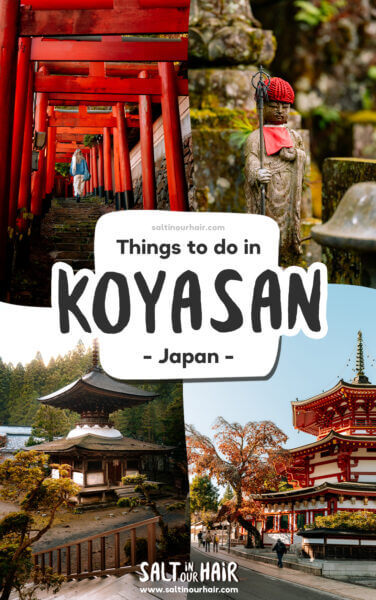
Although walking through a cemetery at night might sound creepy, it felt extremely peaceful for us!
After, walk just behind the hall to visit the mausoleum, where the founder of Koyasan, Kobo Daishi, rests. He was also the founder of this specific sect of Buddhism: Shingon Buddhism. Legend has it that he is still alive and well inside the tomb.
Note: Both these locations are a must-visit on your Koyasan temples route. Unfortunately, you’re not allowed to take pictures or videos here, and they are very strict about it.
Entrance Fee and Opening Times
The cemetery is open 24/7. However, the temples on the property, like Torodo, have opening times of 5.30 AM – 4.30/5 PM. Best of all, this sacred experience can be enjoyed for free!
Tip: Although the 2km walk is well worth it if you have the energy, you can also take a bus to Oku-no-in-mae stop. From here, you can walk to the cemetery, which saves you half the time (but only takes you through the modern side of the cemetery).
3. Kongo Sammai-in (Oldest Koyasan Temple)
Kongo Sammai-in is the oldest original temple in town (the rest have been rebuilt over the years), so it’s an absolute must-see in Koyasan! This small but stunning Koyasan temple is often overlooked in favor of its bigger neighbors. However, we think it’s one of the most beautiful in the area.
There is a magical feeling of calm here; the temple is set back away from the road within a beautiful pine forest that is covered in a blanket of snow during winter. It’s also spectacular in the spring, as many flowers bloom around the temple, including colorful rhododendrons. (Here is the exact location of the temple)
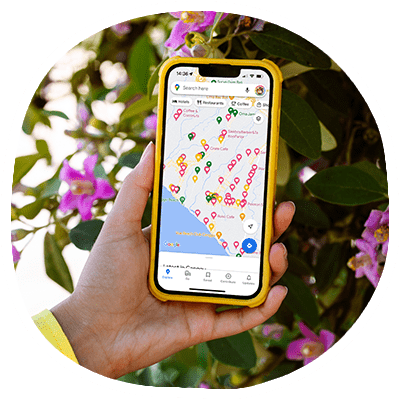
Inside are some beautiful statues. However, the real highlight is that this temple has opened its doors to overnight visitors, allowing you to spend the night in the oldest temple of Mount Koya! There’s even an onsen on site for complete relaxation.
Entry fee and opening times: The temple is open from 8 AM – 5 PM (March 5 – November 27) and costs 300 yen (2 USD) to enter. Outside of these months, it’s free. Please note, however, that entry is 500 yen (3.50 USD) during exhibition seasons, when unique items such as sculptures, sliding door paintings, or traditional clothing are on display.
Goshuin Stamp
Don’t forget to get your unique temple stamp on your visit to Kongo Sammai-in! In Japan, it’s common for people to queue up at temples and shrines with decorated books ready for their Goshuin (shrine and temple stamps), which you can collect for a small donation. Each shrine has its own individual stamp, so it’s a fun thing to collect on your trip!
4. Kongōbu-ji
Experience one of the most tranquil temples in all of Japan! Kongōbu-ji is especially important as it’s the head temple of Shingon Buddhism, overseeing hundreds of sub-temples throughout the country.
Banryu-tei Japanese Rock Garden
The most inspiring part of this Koyasan temple is the magnificent Banryu-tei Japanese rock garden, which is the largest rock garden in Japan. The garden sits just in front of the temple and is made up of large rocks taken from the birthplace of Shingon founder Kobo Daishi.
The garden feels like a work of art, with circular rings drawn in the sand around each rock; it looks a bit like mountains in the desert!
Opening times and entry fee: 8.30 AM – 5 PM (last entry 4.30 PM). Tickets cost 1000 yen (7 USD). Please note that you’re not allowed to take photos inside the temple, only of the rock garden outside.
5. Konpon Daito (Grand Central Pagoda)
Within the Kongōbu-ji temple complex, discover the great grand central pagoda of Konpon Daito. The 45-meter-high, two-story temple comprises a beautiful vermillion pagoda, which is viewed as a symbol of Mount Koya. It’s also said to be the first pagoda of its kind (2-storied square) in Japan. Inside, discover a giant statue of the central Buddha of Shingon Buddhism, surrounded by pillars painted with beautiful illustrations.
Tickets cost 200 yen (1.50 USD), and the complex (Garan) is open from 8.30 AM to 5 PM.
Note: Sadly, we could not visit the Konpon Daito, as it was already closed when we arrived. Most Koyasan temples close by 5 PM (generally with the last entry at 4.30 PM), so bear this in mind when deciding which temples you’d like to see.
6. Koyasan Daishikyokai
Koyasan Daishikyokai is not the most popular visit for tourists, but it is for locals, as it’s the administrative center for Shingon Buddhism. It’s made up of two buildings: the Henjoden Temple Hall, which is dedicated to the Shingon Founder, Kobo Daishi, and a more contemporary building that is designed for learning and admin.
Although impressive, you only need to visit this Koyasan temple briefly as there’s not a huge amount to see. Remember to also collect your Goshuin stamp here!
Opening times and entry fee: Open 8.30 AM – 5 PM (entry until 4.30 PM). Free to enter. Please remember to take your shoes off before stepping inside the temple.
Jukai Ceremony (Unique experience in Koyosan!)
If you’re interested, you can also participate in Jukai (receiving Buddhist precepts). These precepts are commitments to the guiding principles of Buddhism, for example, not to murder or cheat. Jukai takes about 30 minutes, during which you’ll sit in a dark room and repeat after the priest. Anyone can undertake the ceremony, whether you’re Buddhist or not, and you’ll also get a certificate at the end.
Note: The ceremony costs 1000 yen (7 USD). Alternatively, buy a combi ticket for 2500 yen (17 USD) which includes 6 other major sites in Koyasan. You can buy the combination ticket at the Koyasan Shukubo Association Offices.
Where to Stay in Koyasan, Japan
There are over 50 Koyasan temple stays to choose from, all of which have varying facilities. In general, though, accommodation is more basic, like a traditional Ryokan, and in line with conventional Buddhist principles. However, it’s fantastic to experience how the monks live, and although beds are on the floor, we still found the experience comfortable.
Koyasan is a small place, so most temple stays will place you within walking distance of all the top things to do. We stayed at the well-located Rengejo-in Temple and had one of the most memorable experiences of our trip!
How Many Days in Koyasan?
Staying overnight in a traditional Buddhist temple was one of the highlights of our Japan itinerary, offering an insight into Shingon Buddhism and its importance in Japanese culture. You’ll also get to explore in the early morning without the crowds and see the mountain town after dark when all the lanterns bathe the temples in a warm glow.
Many people visit Koyasan on a day tour from Osaka or Kyoto, which can create more crowds at the main sites. However, if you don’t have time to stay overnight, this is a great option; it will still give you an overall feel for Mount Koya’s temple town.
How to Visit Koyasan, Japan
Visiting Koyasan is relatively easy from both Osaka and Kyoto, particularly if you’ve hired a car. The journey is 1 hour 45 minutes from Osaka and just over 2 hours from Kyoto. It’s also a great idea to drive if you want a little more flexibility while on your Japan itinerary. For example, we did a road trip loop:
- Osaka > Hongu (where we visited Kumano Hongu Taisha Otorii)
- Hongu > Overnight stay at Yunomine Onsen
- Yunomine Onsen > Nachi Falls
- Nachi Falls > Koyasan Temple Village
We recommend to rent a car in Japan through Rentalcars.com with many rental locations and flexible cancellation. Book your rental car here.
However, if you don’t have a car, there are various public transport options:
Kyoto to Koyasan
Take a rapid train from Kyoto Station to Osaka Namba Station (covered by your Japan Rail Pass) in under 30 minutes.
Buy your Japan Rail Pass in advance here
From here, jump on another train to Gokurabashi Station (1.5 hours) before taking the cable car up the mountain to Koyosan Station.
Osaka to Koyasan
First, take the train from Osaka Namba Station to Gokurabashi (1.5 hours). From here, take the cable car up the mountain to Koyosan for 390 yen (2.50 USD). Please note that the Japan Rail Pass does not cover this route.
Note: Once you’ve reached the top of the mountain by cable car, you can take a bus directly into town. We’ve pinned all locations on our Japan Google Maps (we always recommend checking Maps in advance for accurate timetables).

Getting Around
Koyasan is a small town, so you can walk between most main sites. You can do this using Google Maps, or if you want to learn more about each temple, you can join a tour with a local guide. This is an excellent idea if you want to learn more about the legends and history of sacred Mount Koya.
Best Cafes and Restaurants
If you book a traditional Koyasan temple stay, you’ll have the option to dine with the monks for both vegetarian dinner and breakfast. However, there are also some great restaurants in the area, should you need a snack break between temple visits. Some of our favorites are:
- Bon On Shya Cafe (very lovely!)
- Higurashi
- Ponpoko
- Yoshi Sushi
How Much Does Koyasan Cost?
Booking a Koyasan temple stay is quite expensive, but it’s so worth it! The price also includes your breakfast and dinner, so you save money on food for your trip. Most sites are free to visit (or for a small fee). Because of this, it’s one of the more budget-friendly places to visit on your Japan itinerary.
Budget Tip: If you’d like a quick snack or an affordable takeaway lunch, we recommend the Family Mart Supermarket. They sell delicious Onigiri (a crunchy seaweed ball with rice and fish inside). You can also mix a cup of frozen fruits into a smoothie for breakfast.
Best Time to Visit
Koyasan is an incredibly sacred place and magical to visit any time of the year. Because it’s located high up Mt Koya, it is noticeably colder. With this in mind, make sure to bring extra layers, particularly if you’re visiting overnight. During the winter, you may see the temple town covered in snow, turning it into a winter wonderland!
Beautiful trees and plants surround the temples, making it spectacular to visit during Spring and Fall. During these times, flowers come into bloom, with cherry blossom trees at their finest, or you’ll see the colorful pre-winter foliage.
By purchasing through our links, you support us at no additional cost.
Thank you for your support. ♥️
- Find Hotels via Booking.com
- Find a Rental Car via Rentalcars.com
- Find Flights to Koyasan via Skyscanner
- Get a Travel Insurance via Heymondo
- Book Tours & Attractions via GetYourGuide
- Book a Bus/Train/Transfer via 12Go
Looking for more travel information? Plan a chat with us for personalised travel advice or get an answer from the Salt in our Hair Travel Community on Facebook.

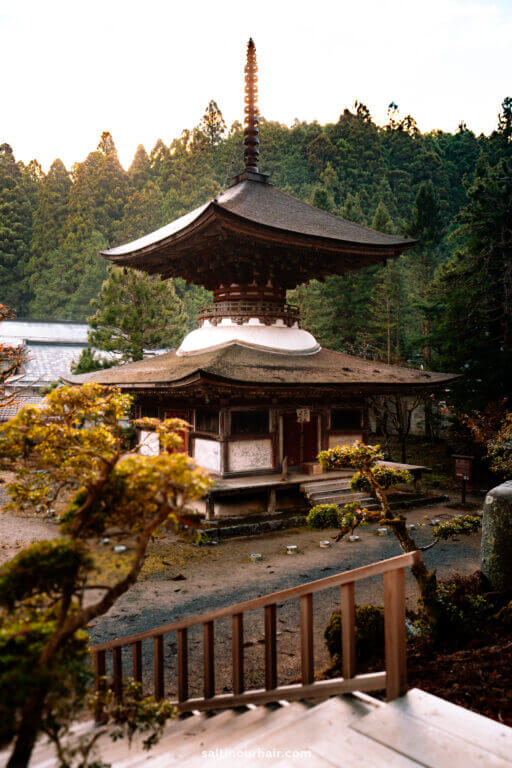
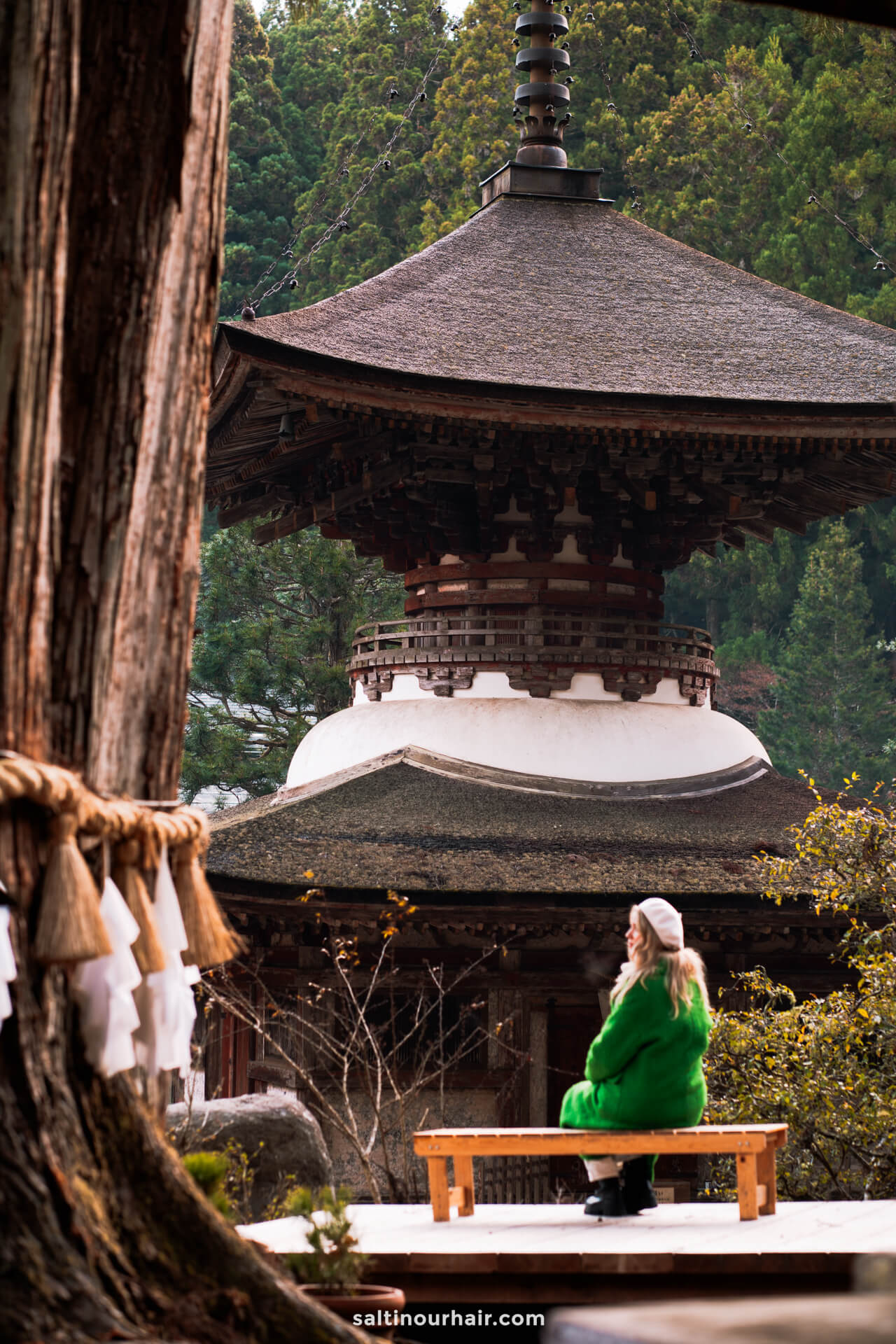
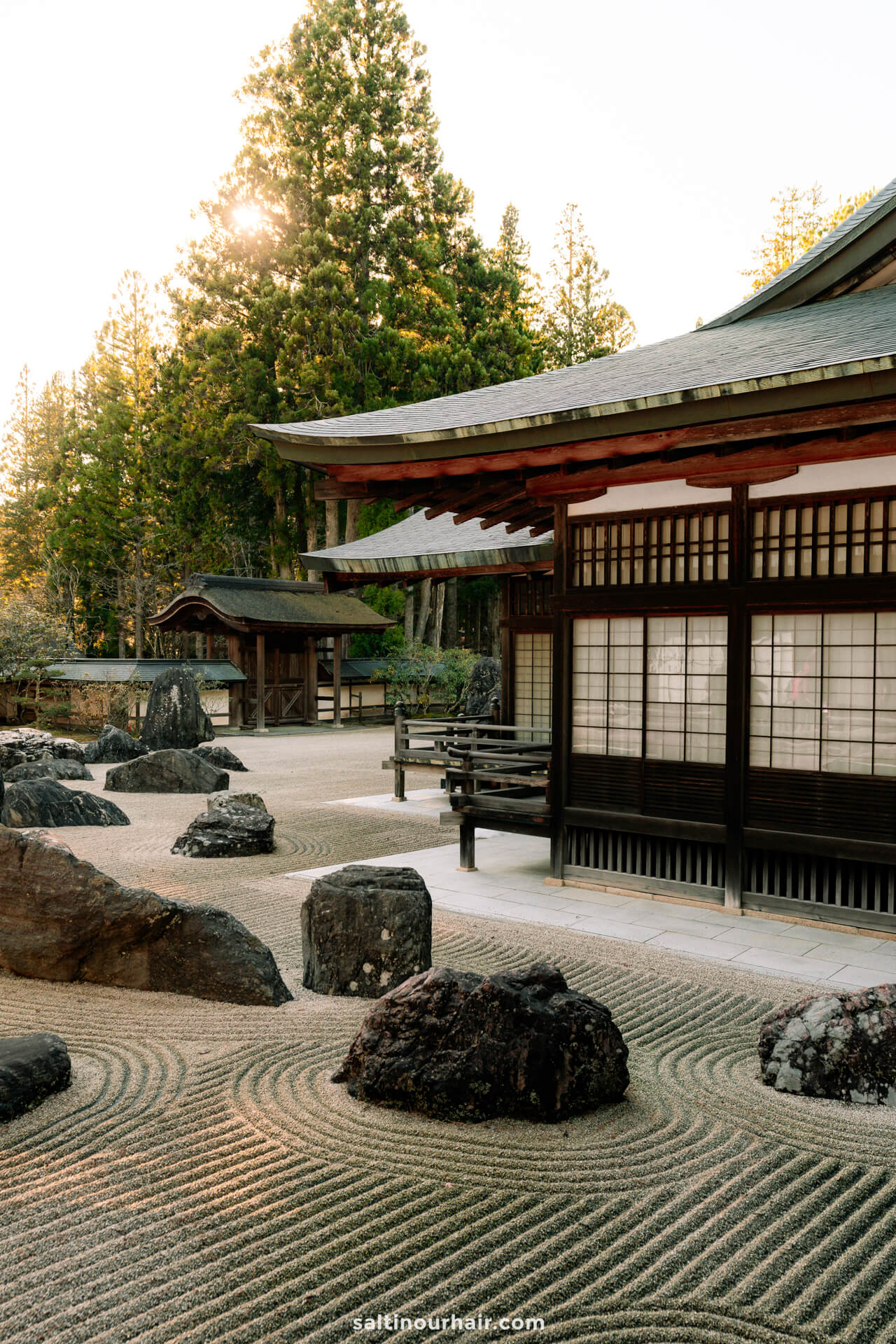
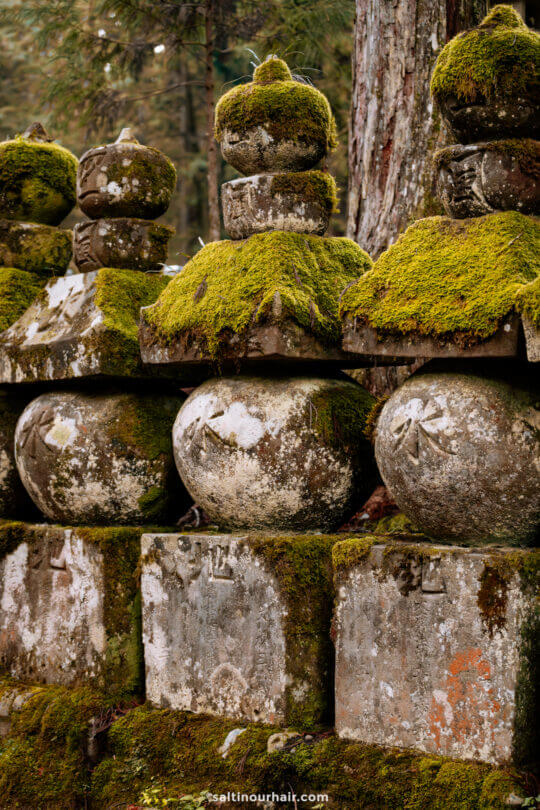
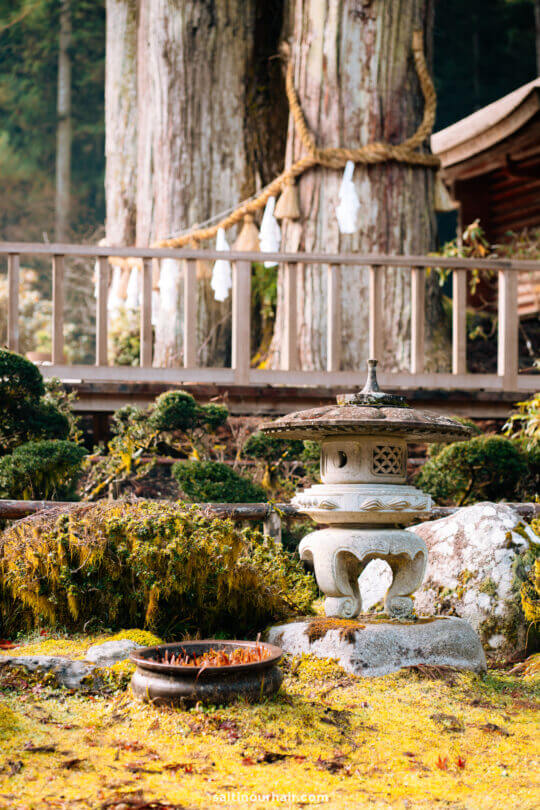
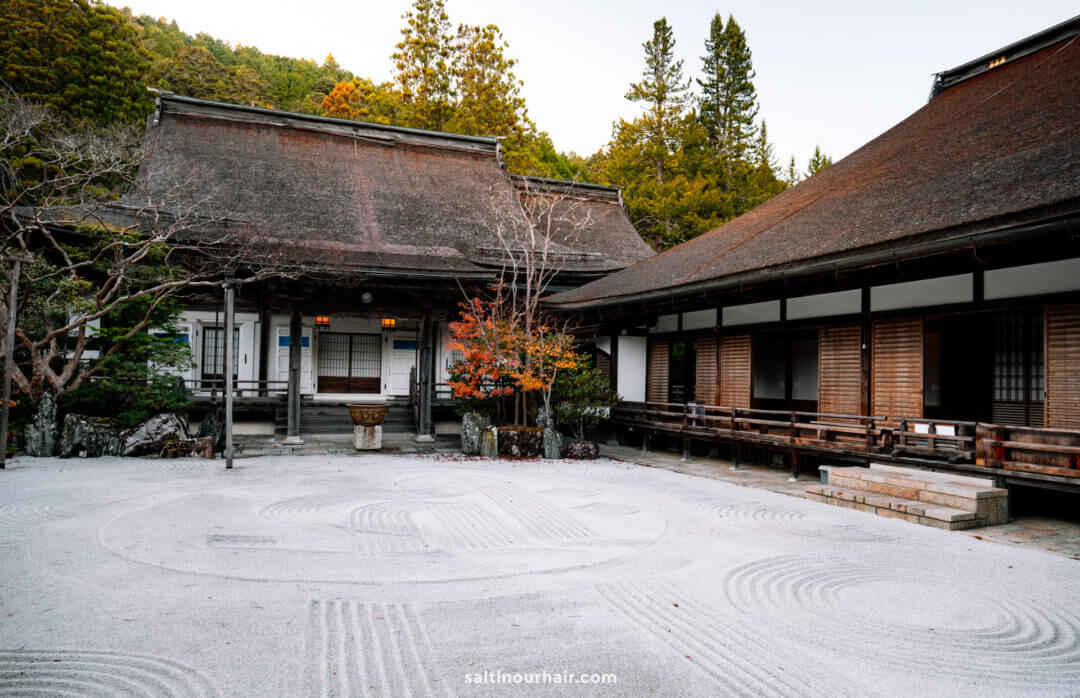
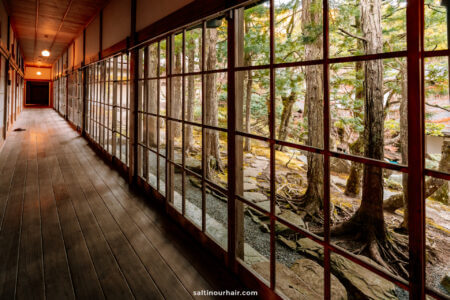
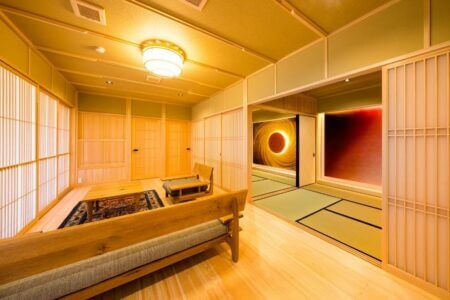
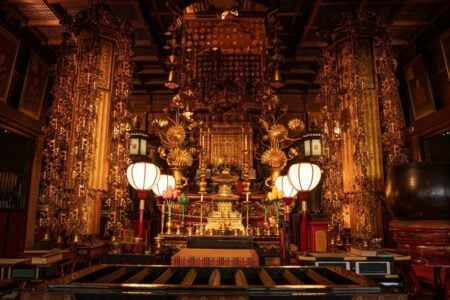
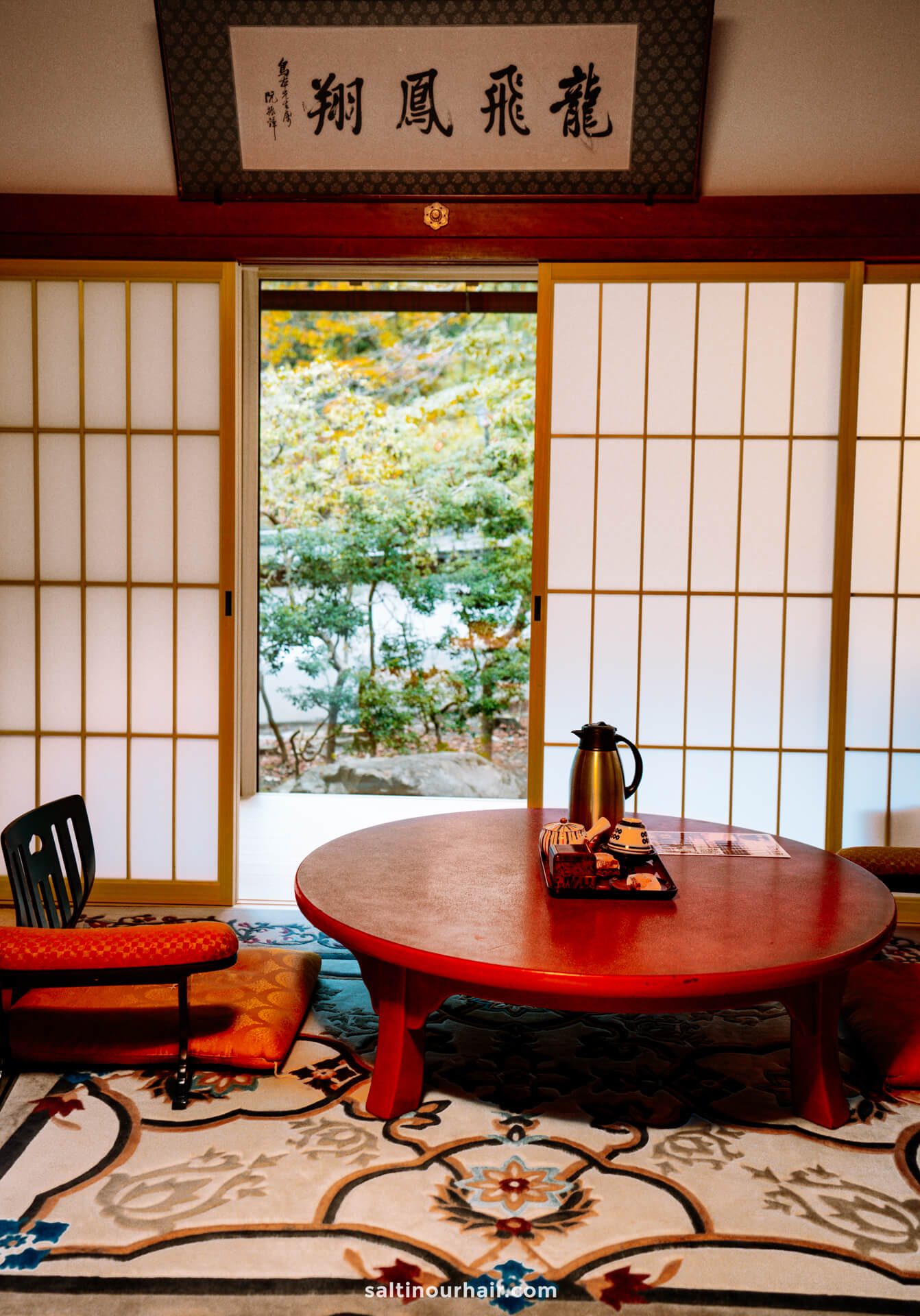
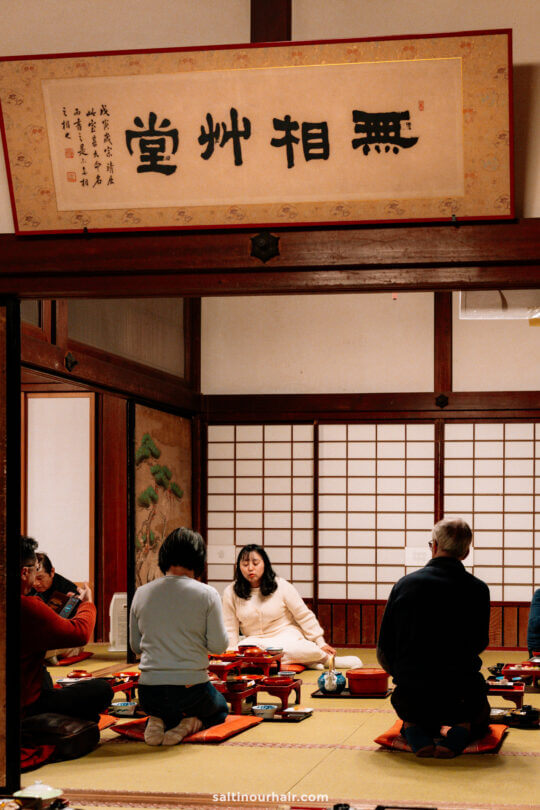
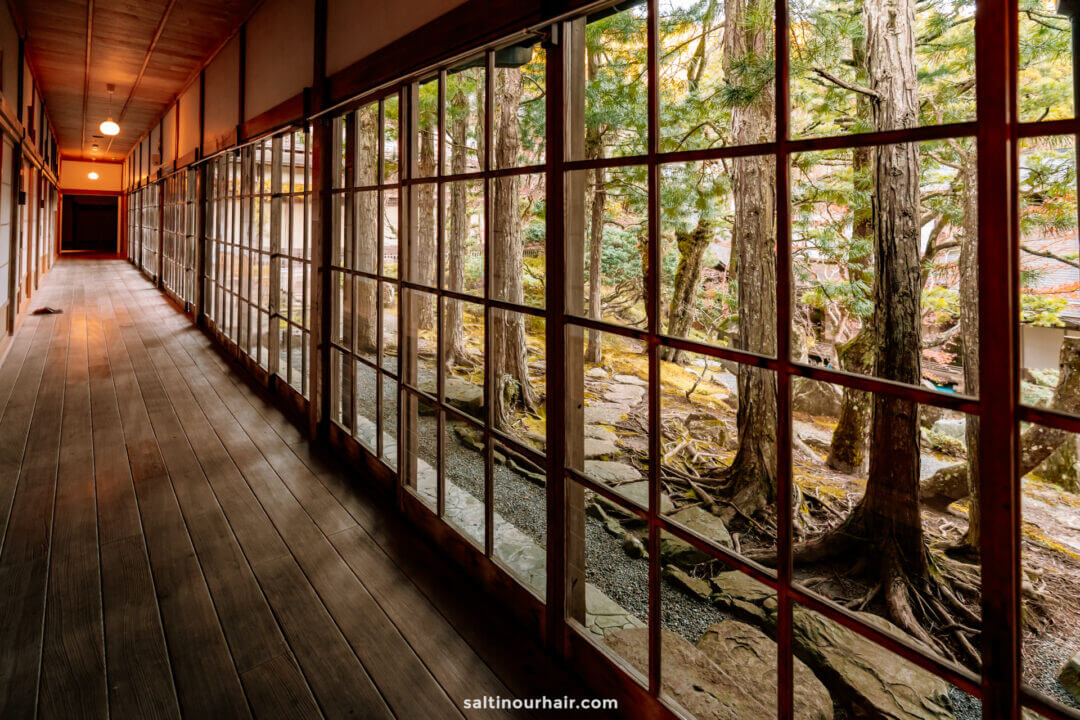
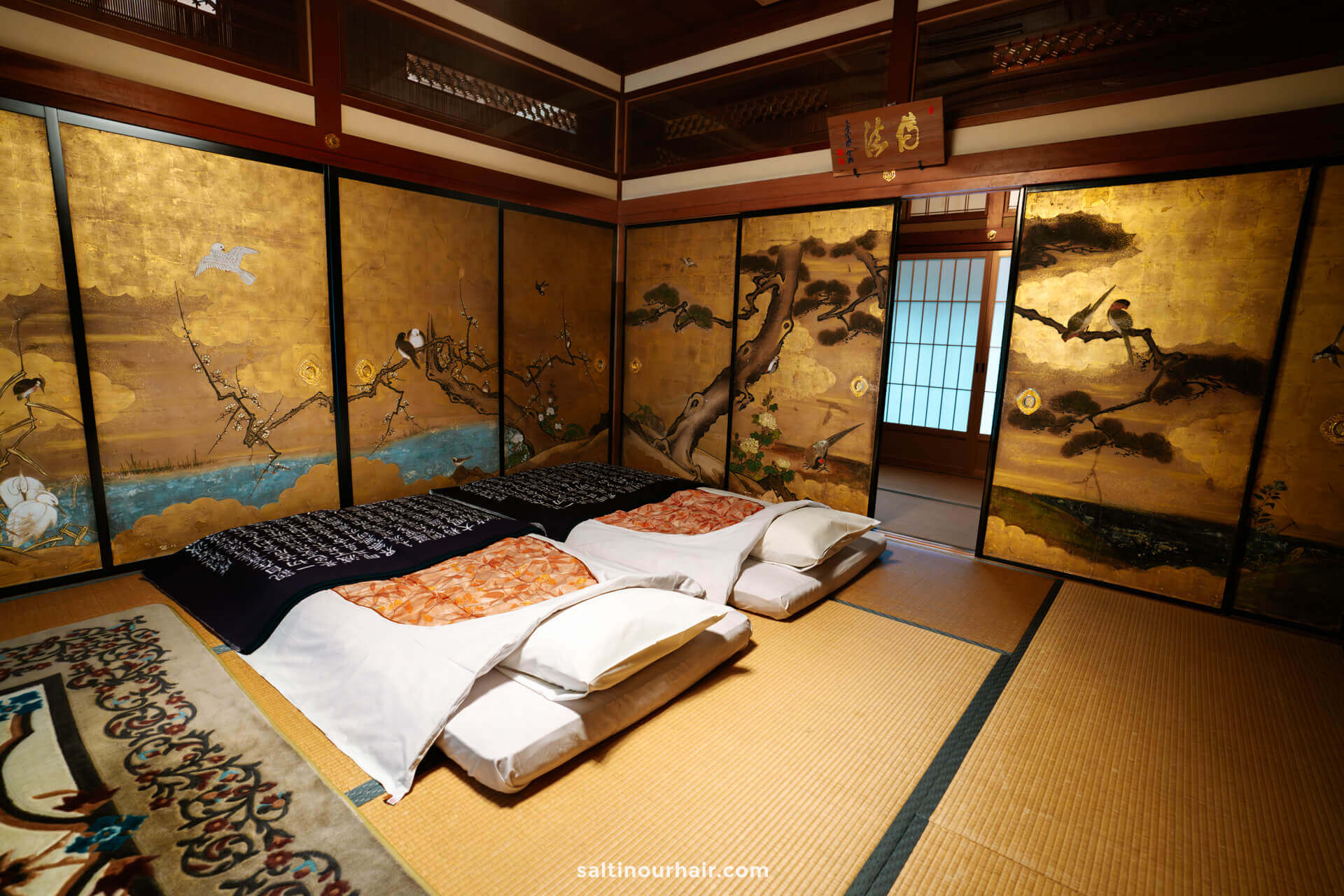
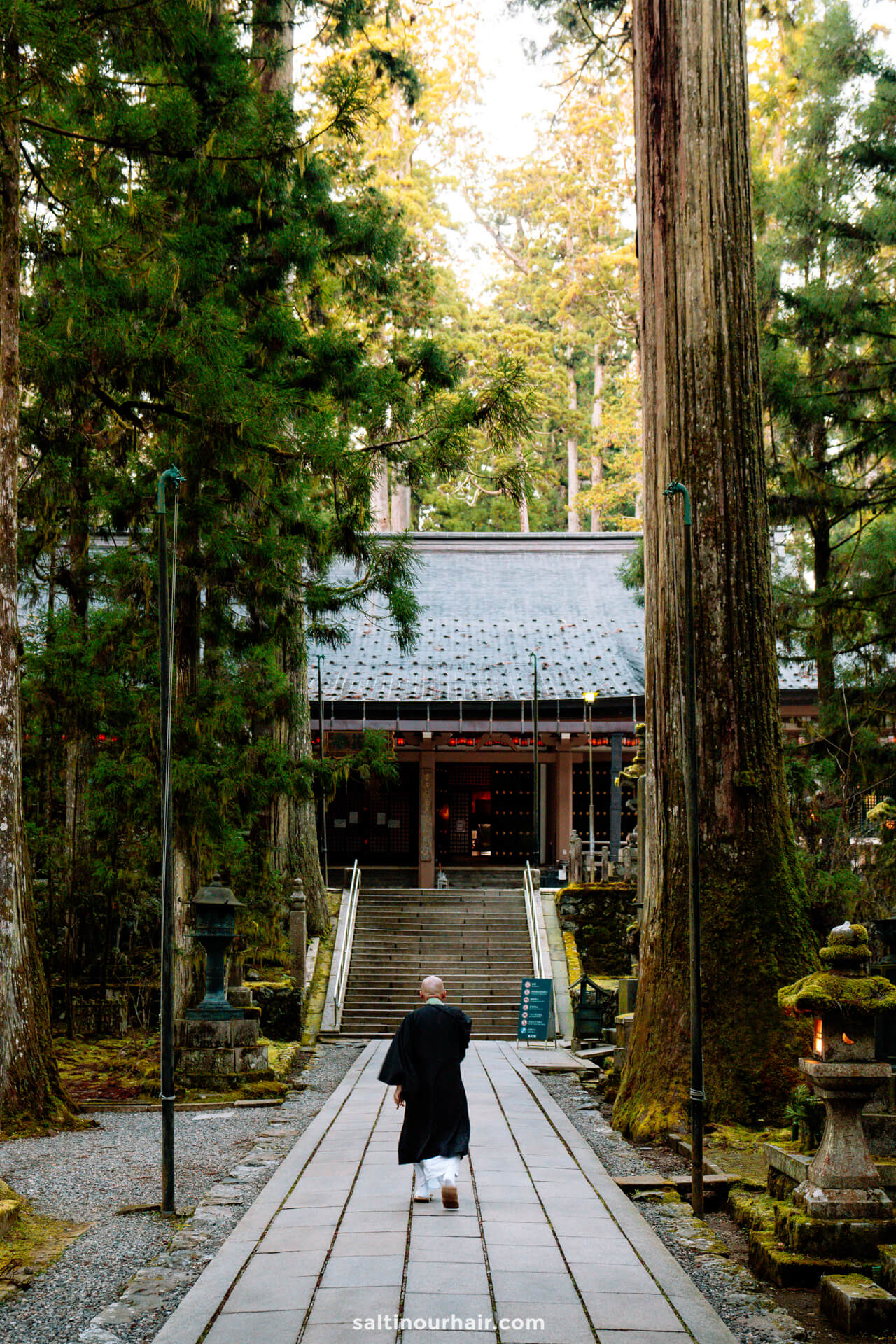
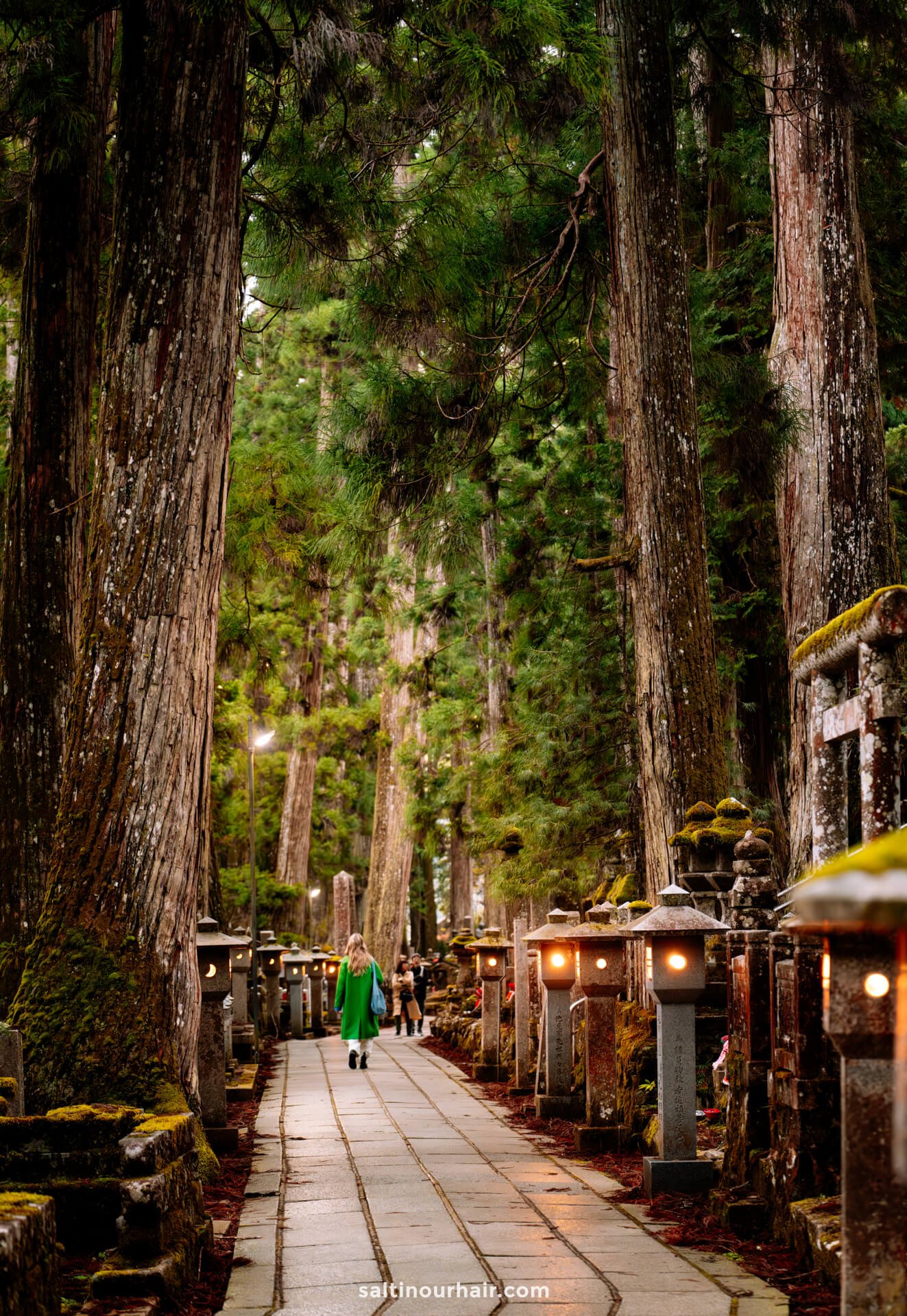
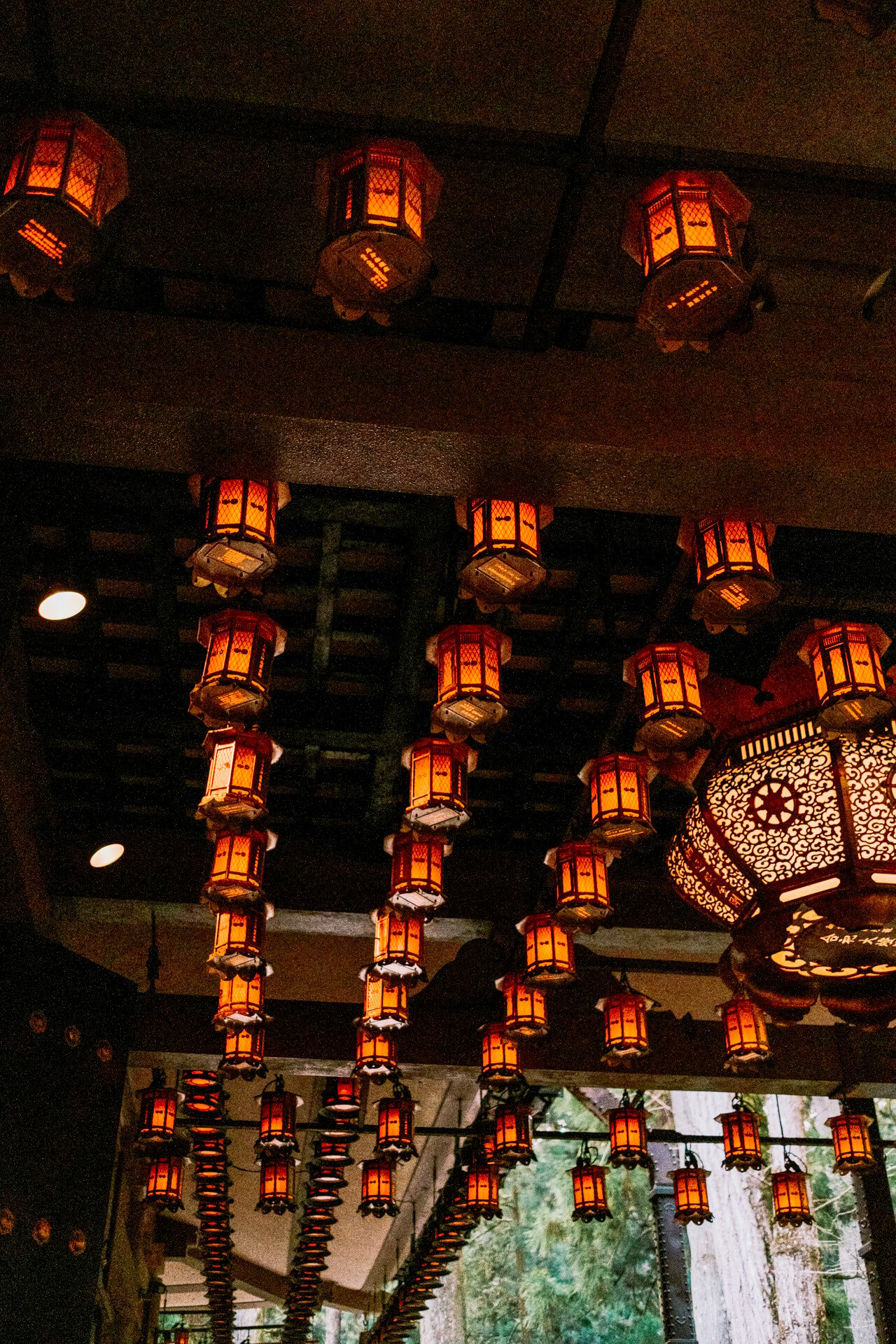
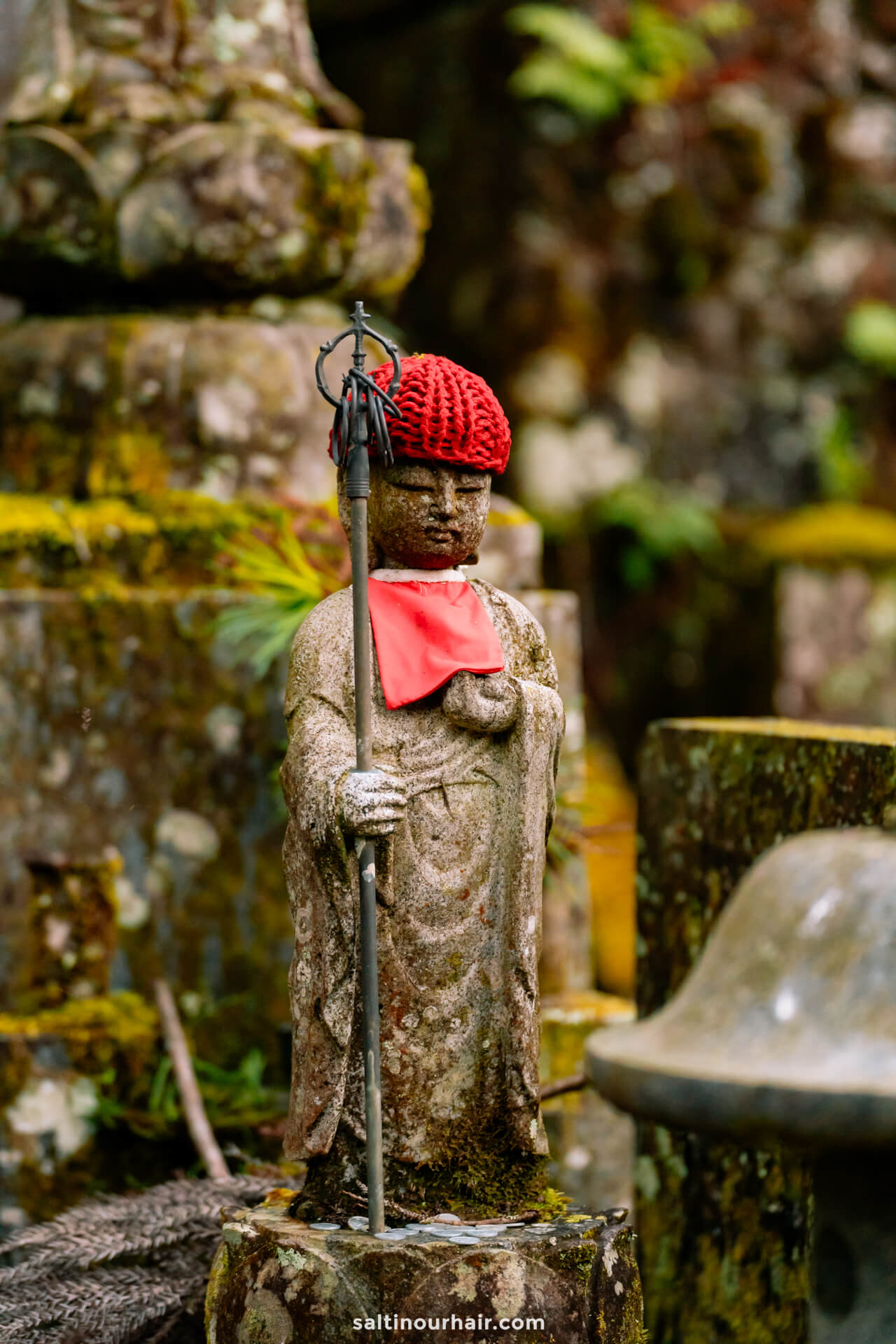
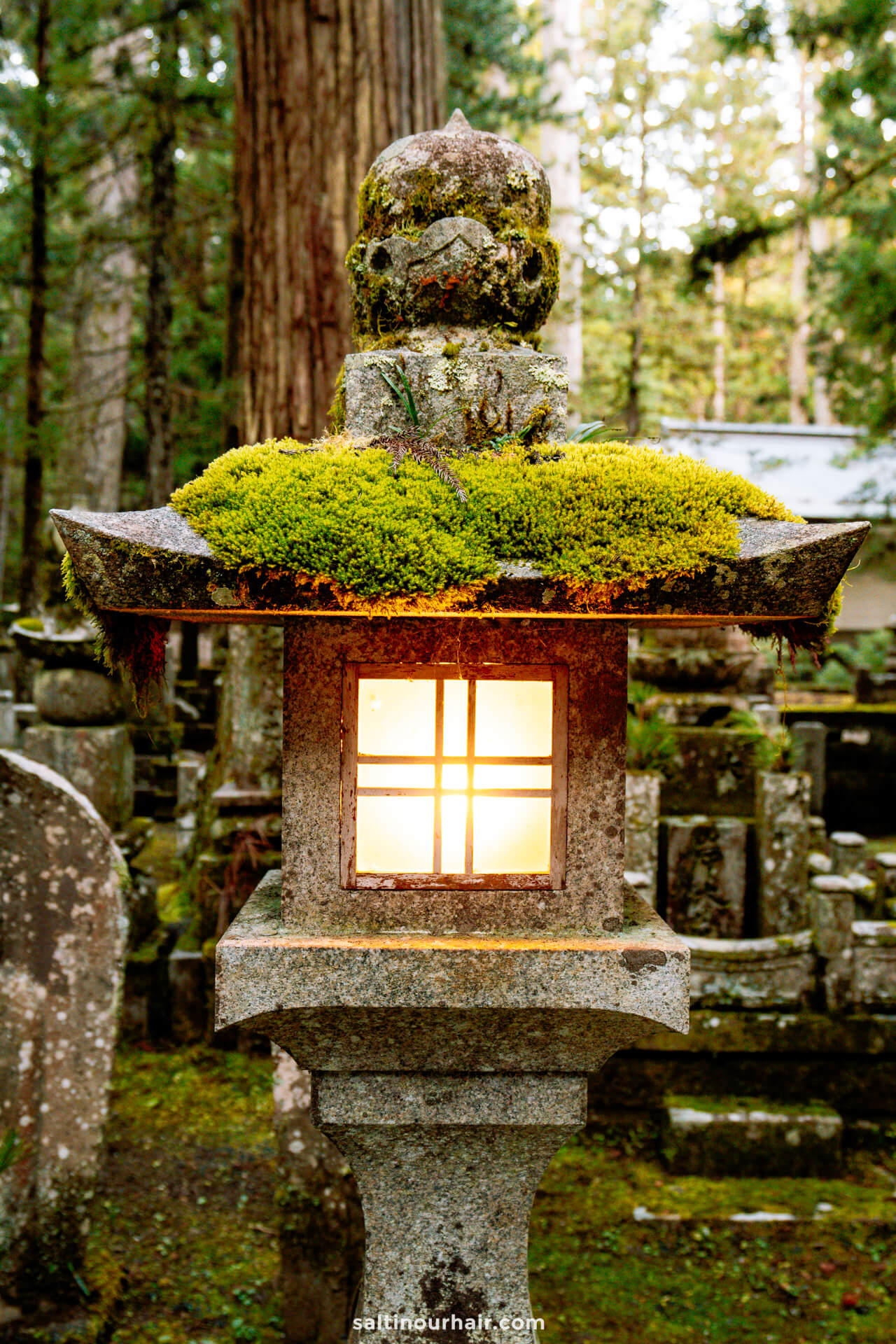
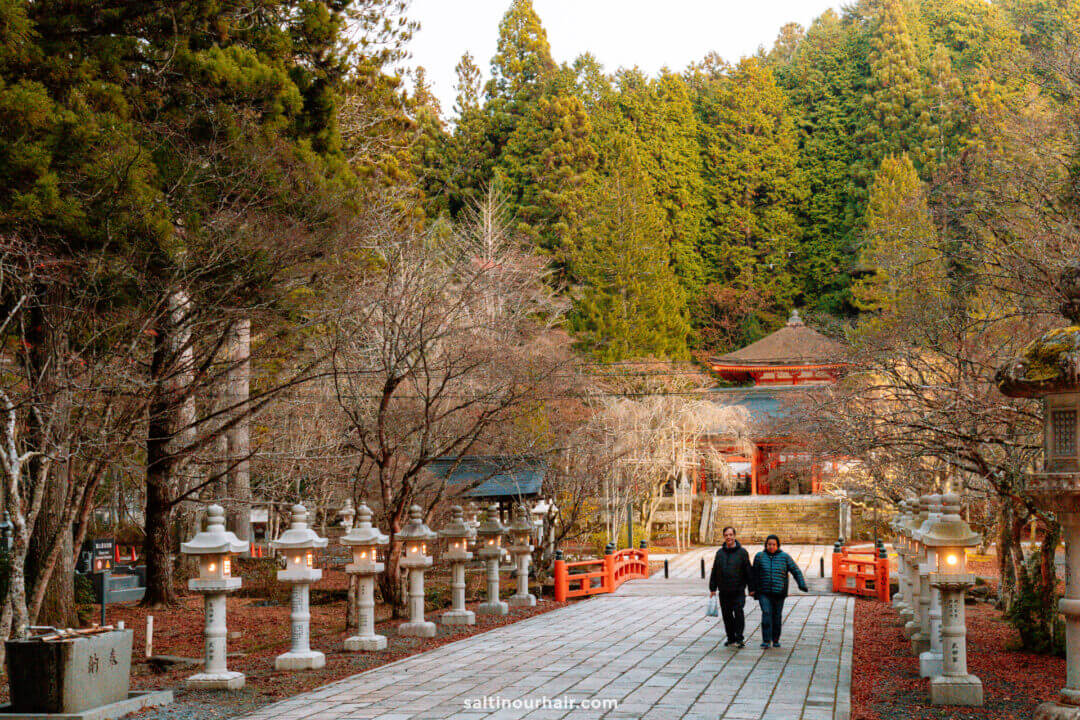
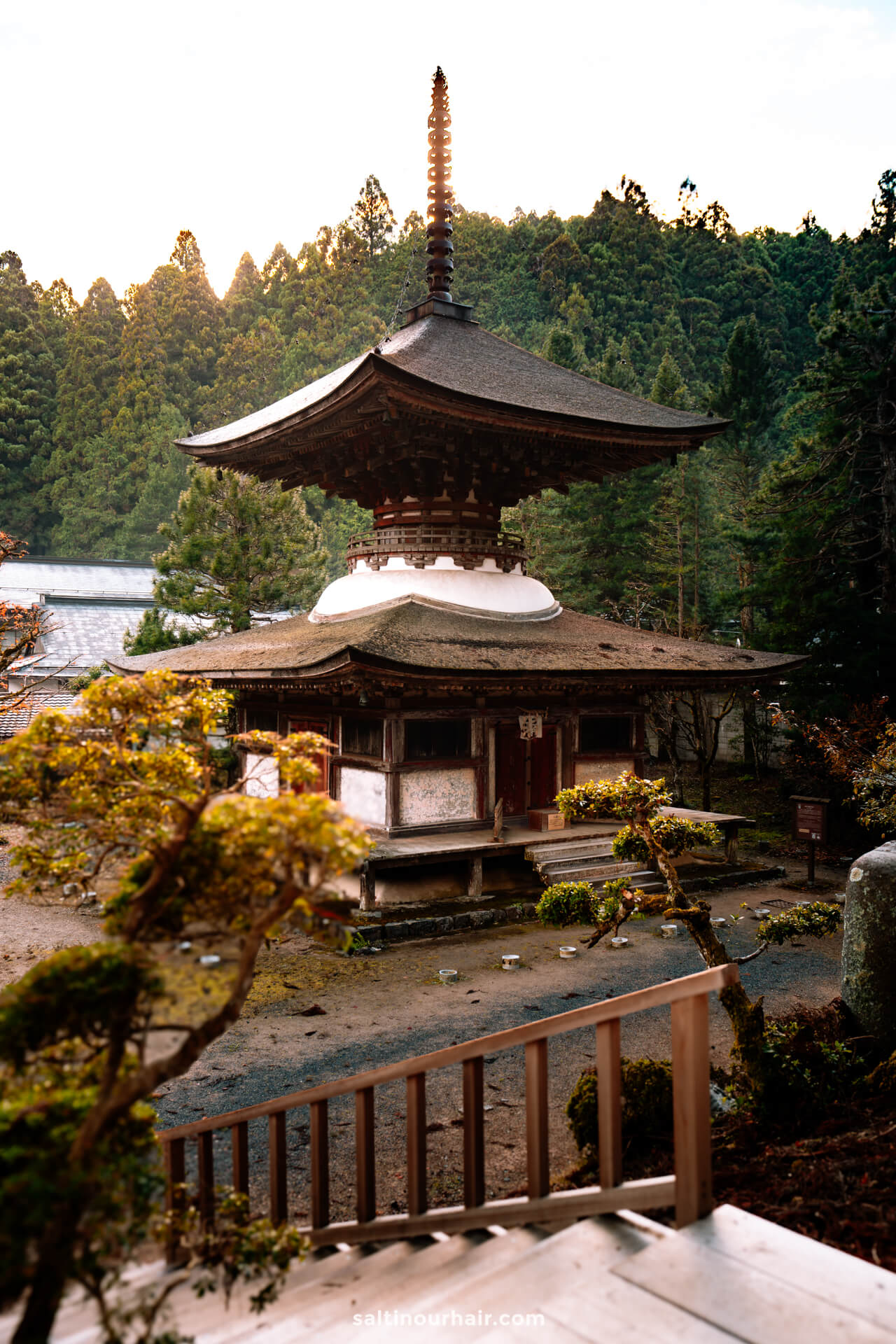
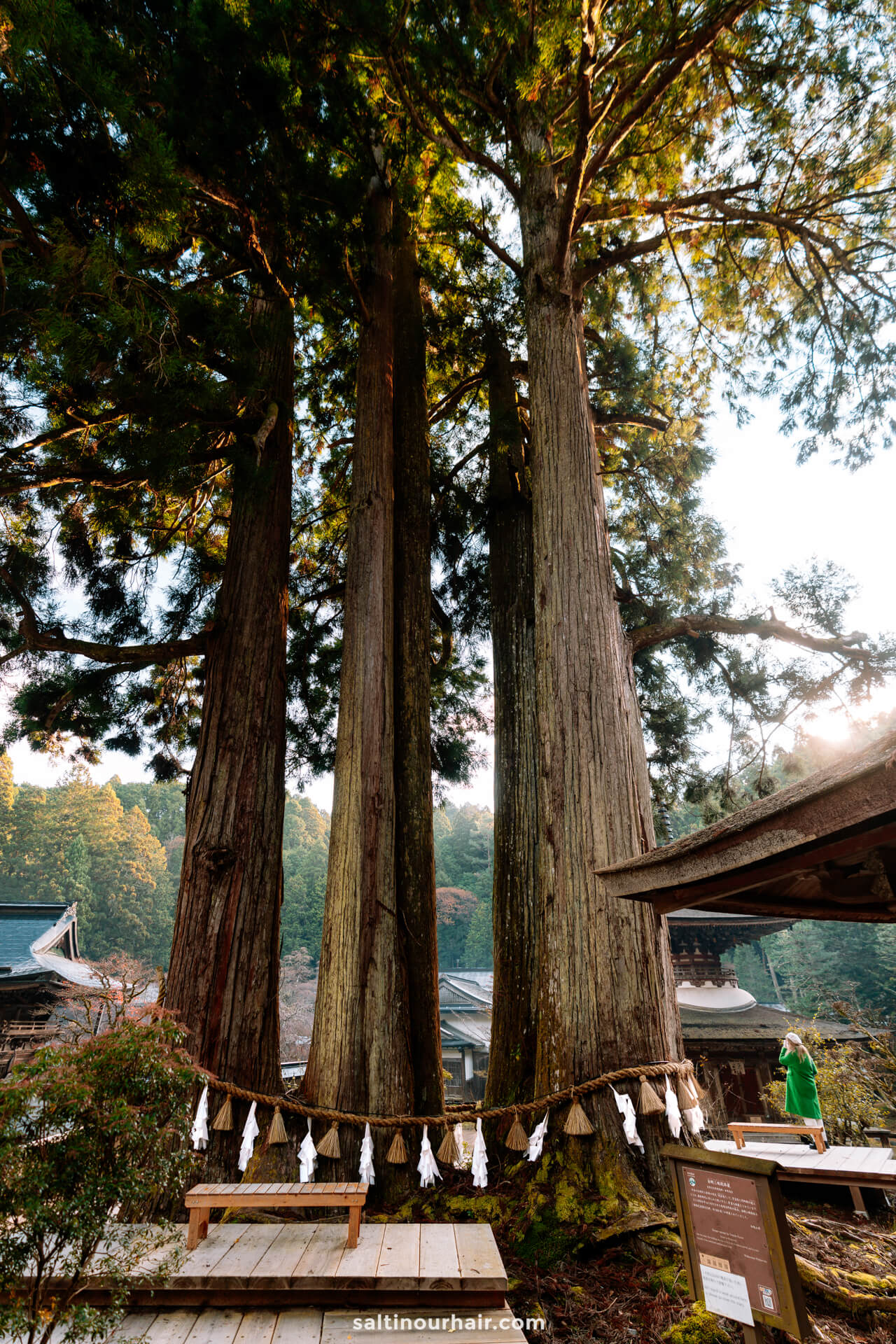
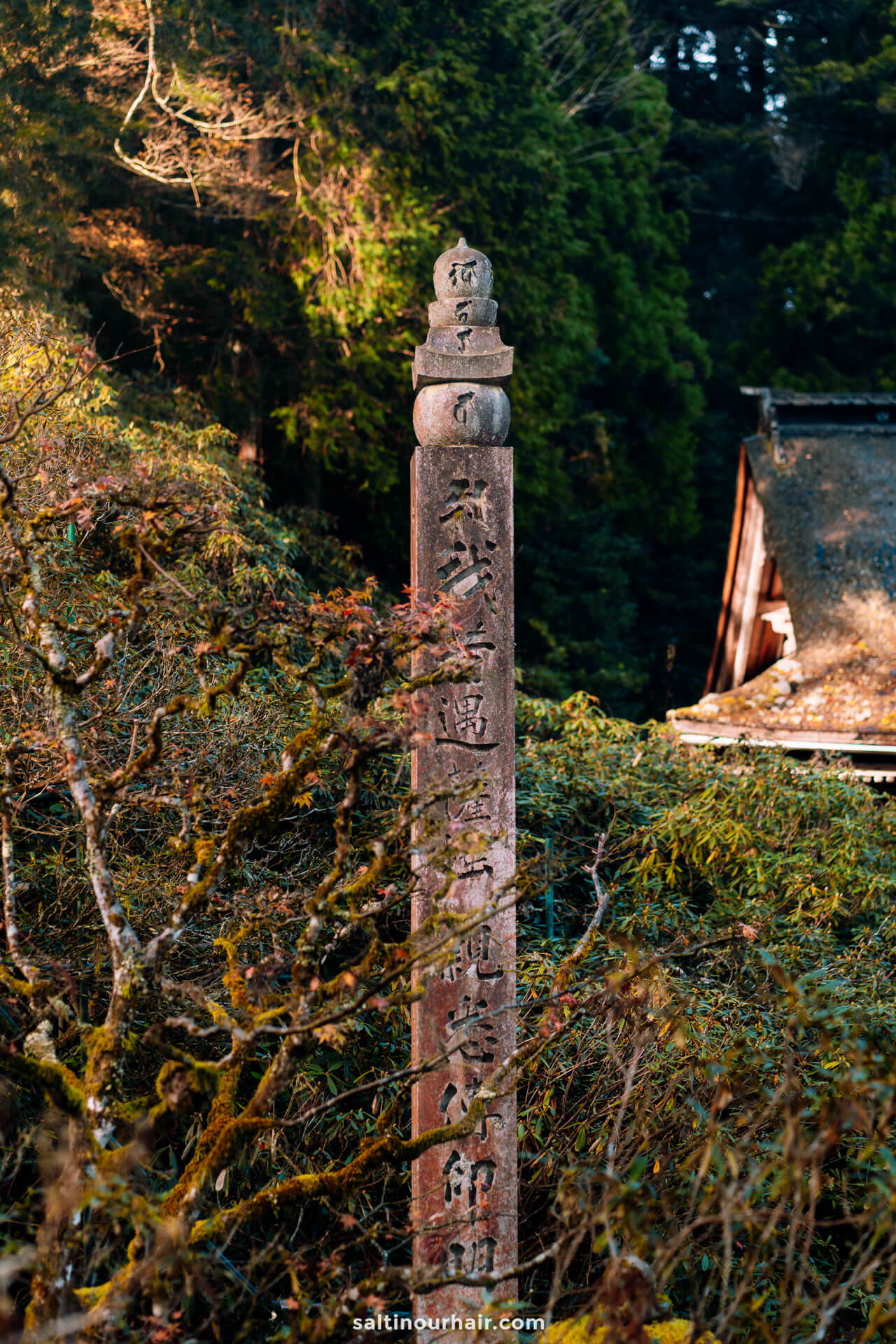
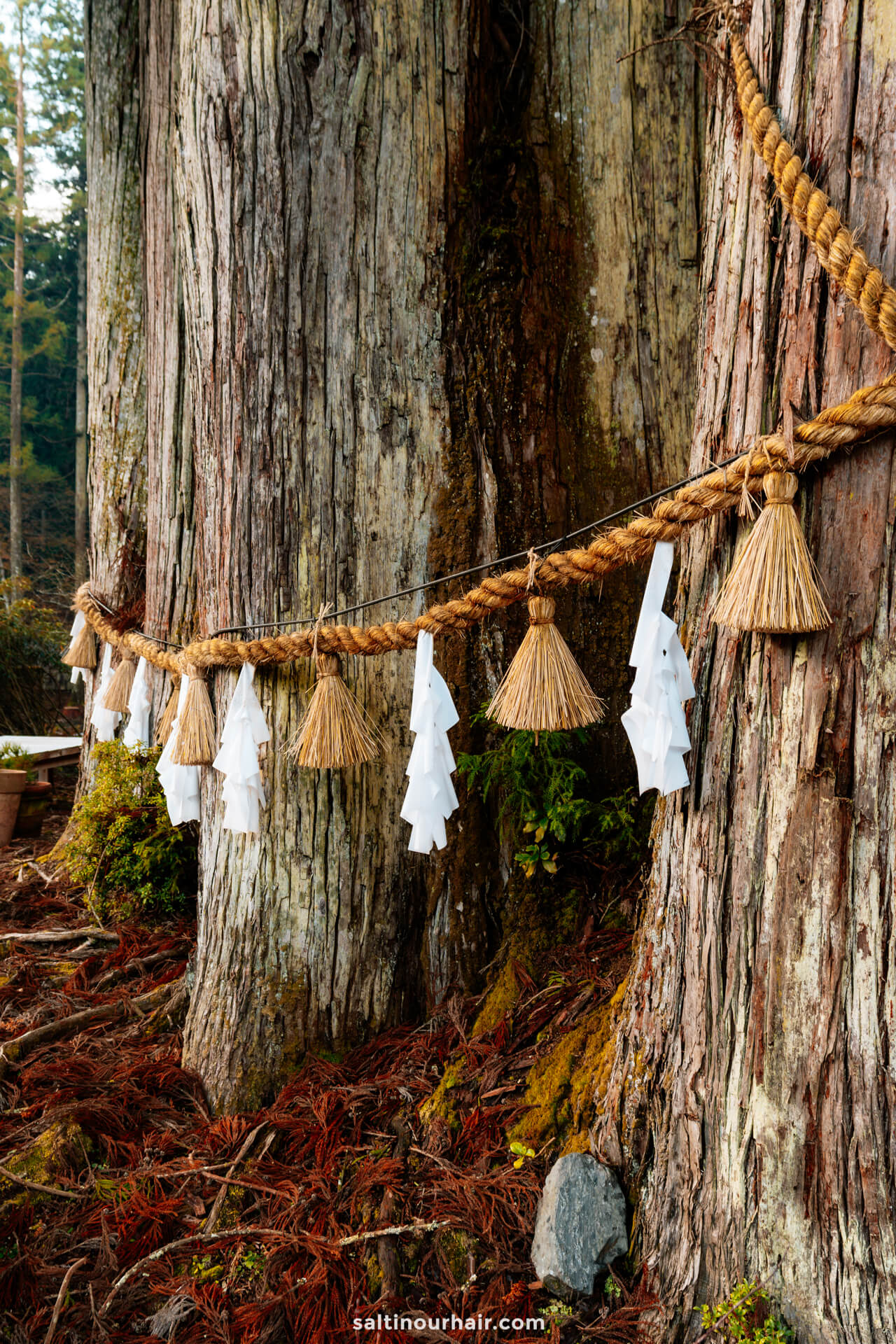
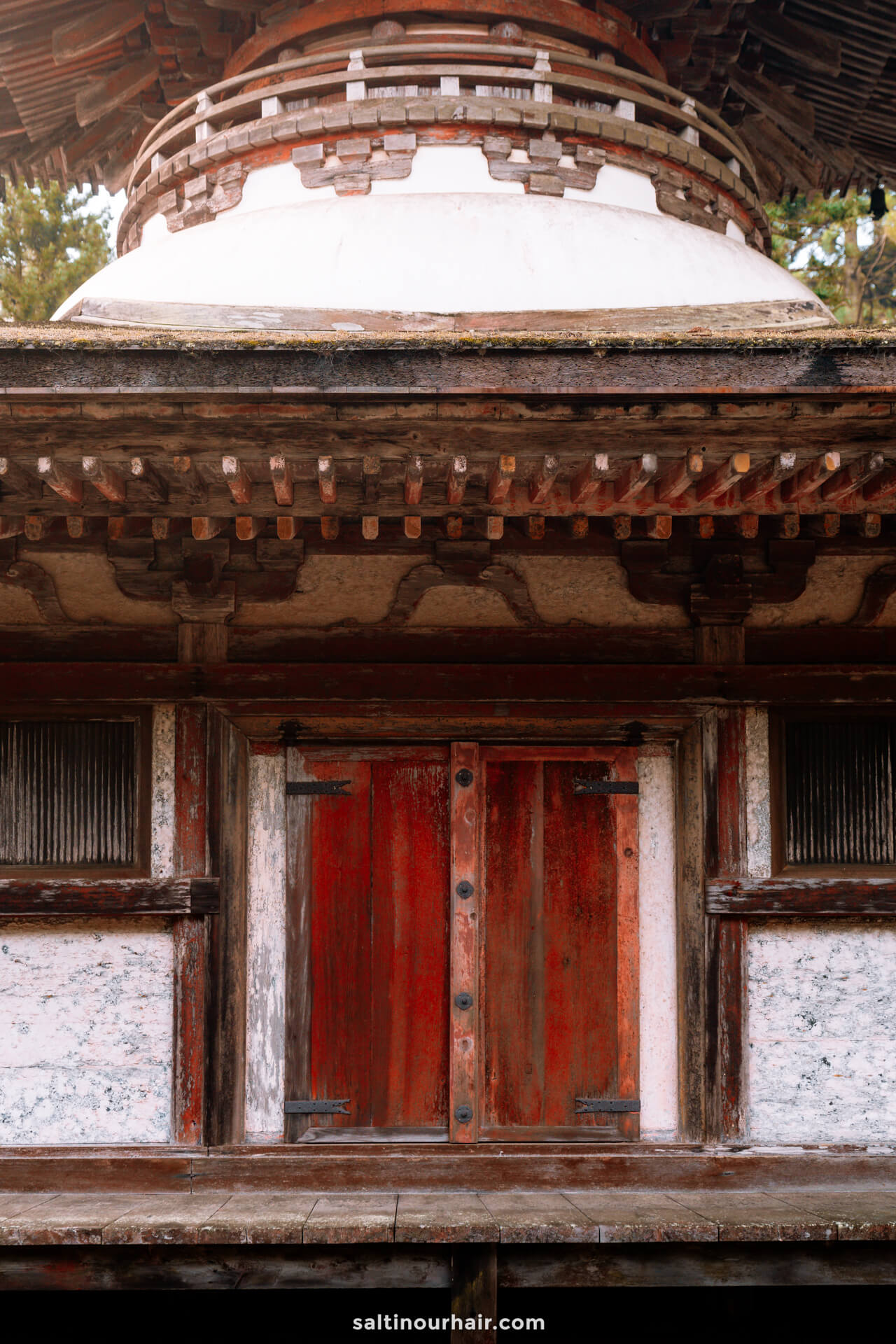
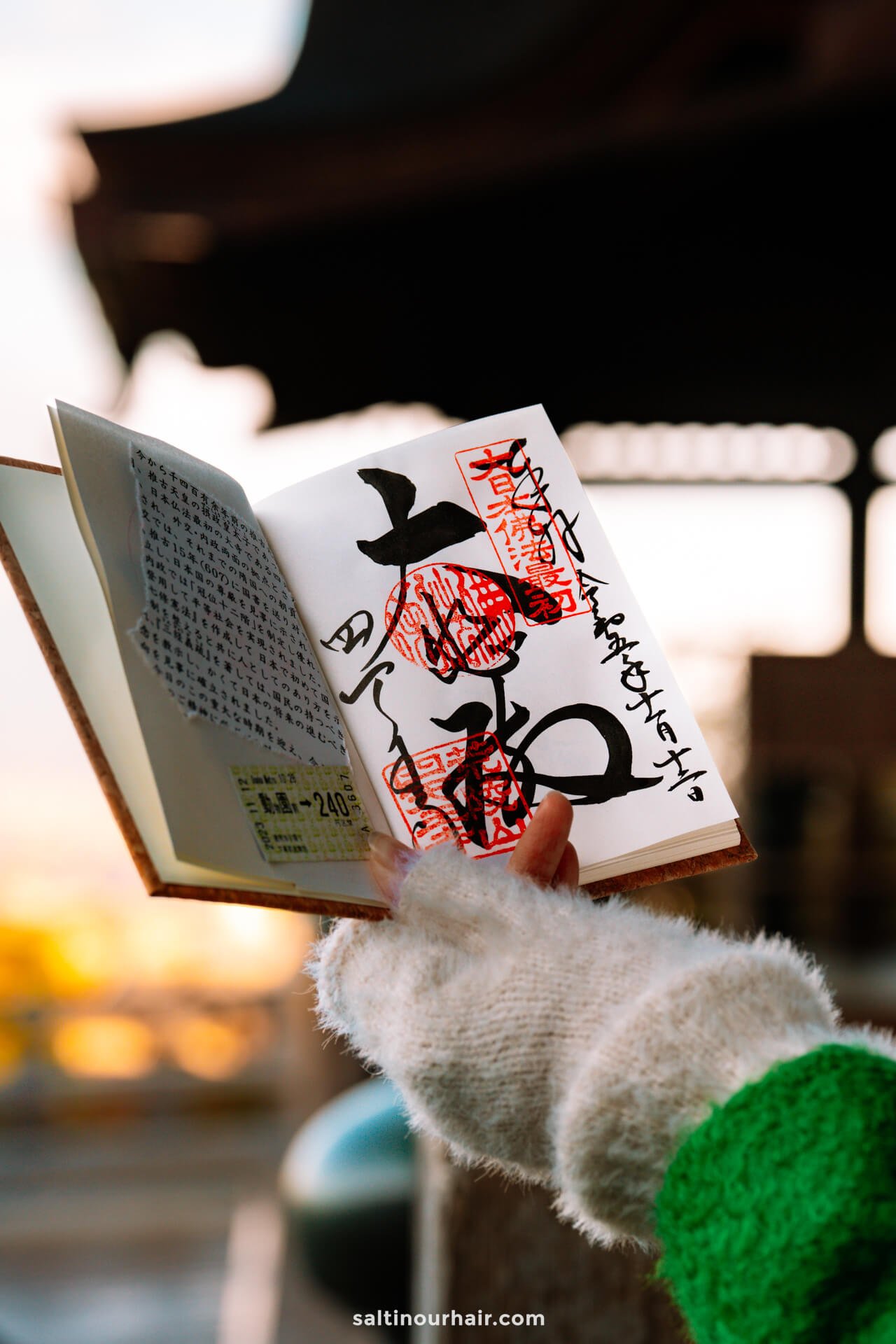
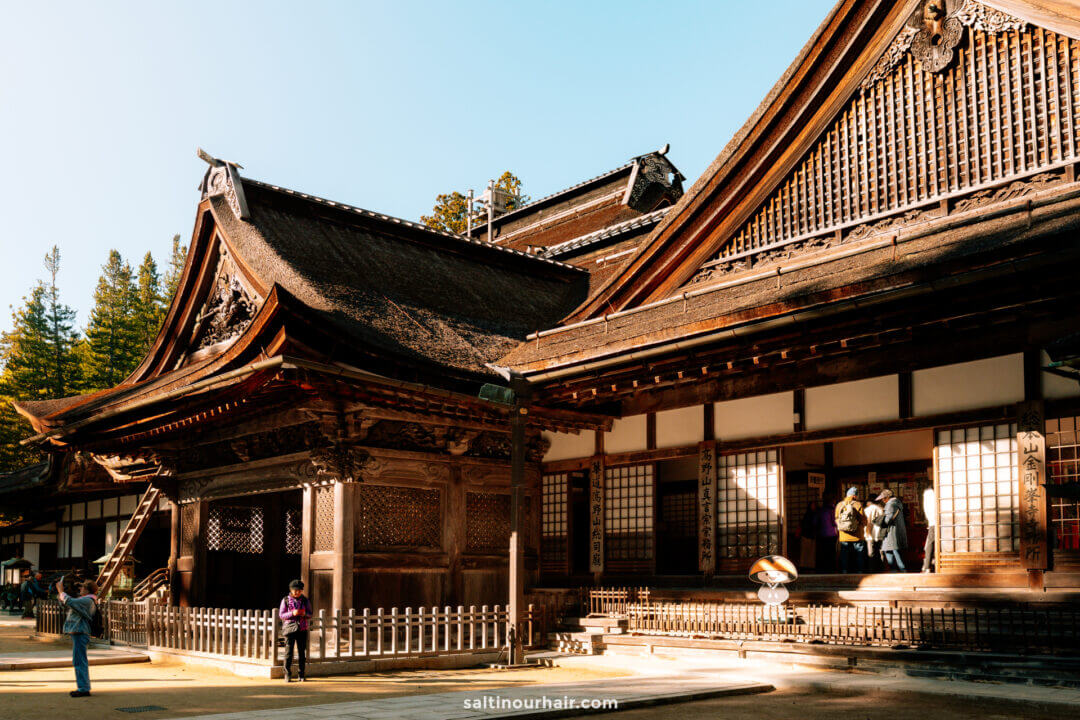
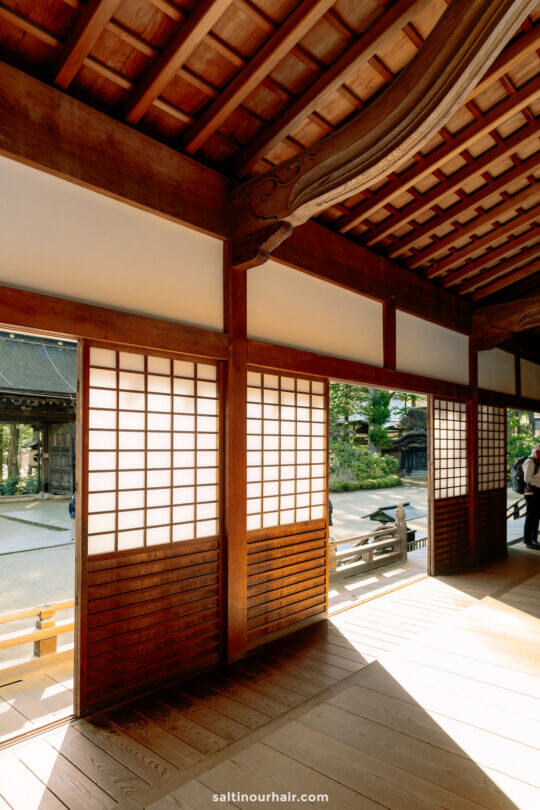
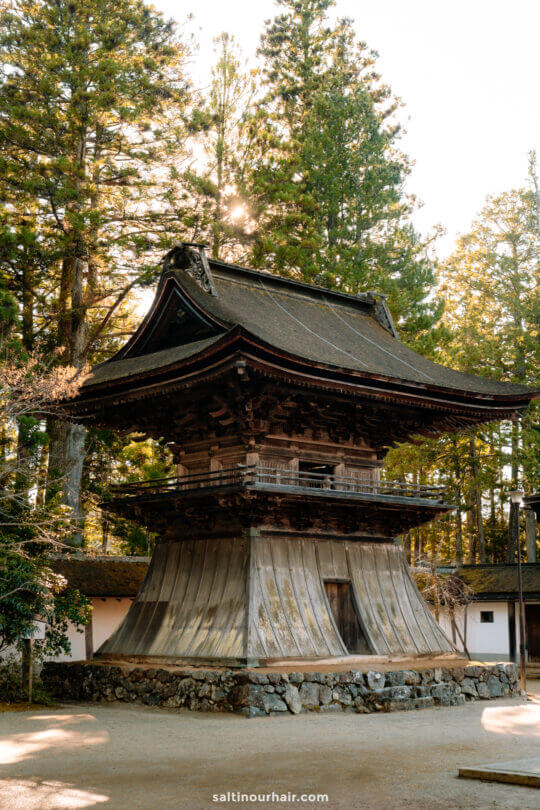
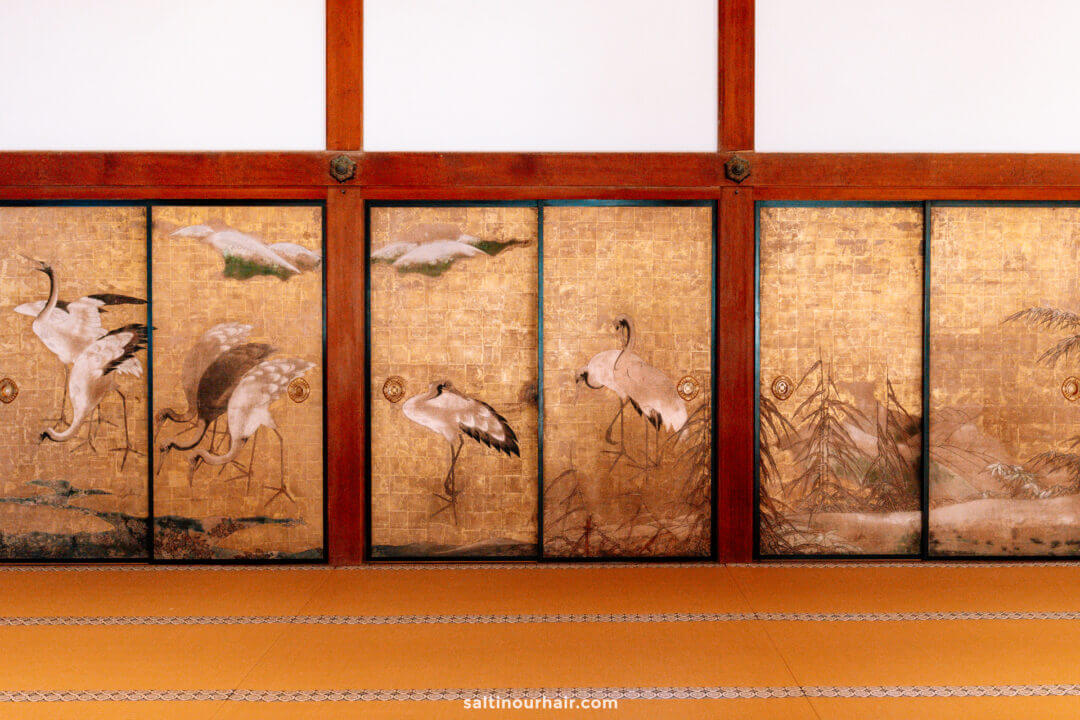
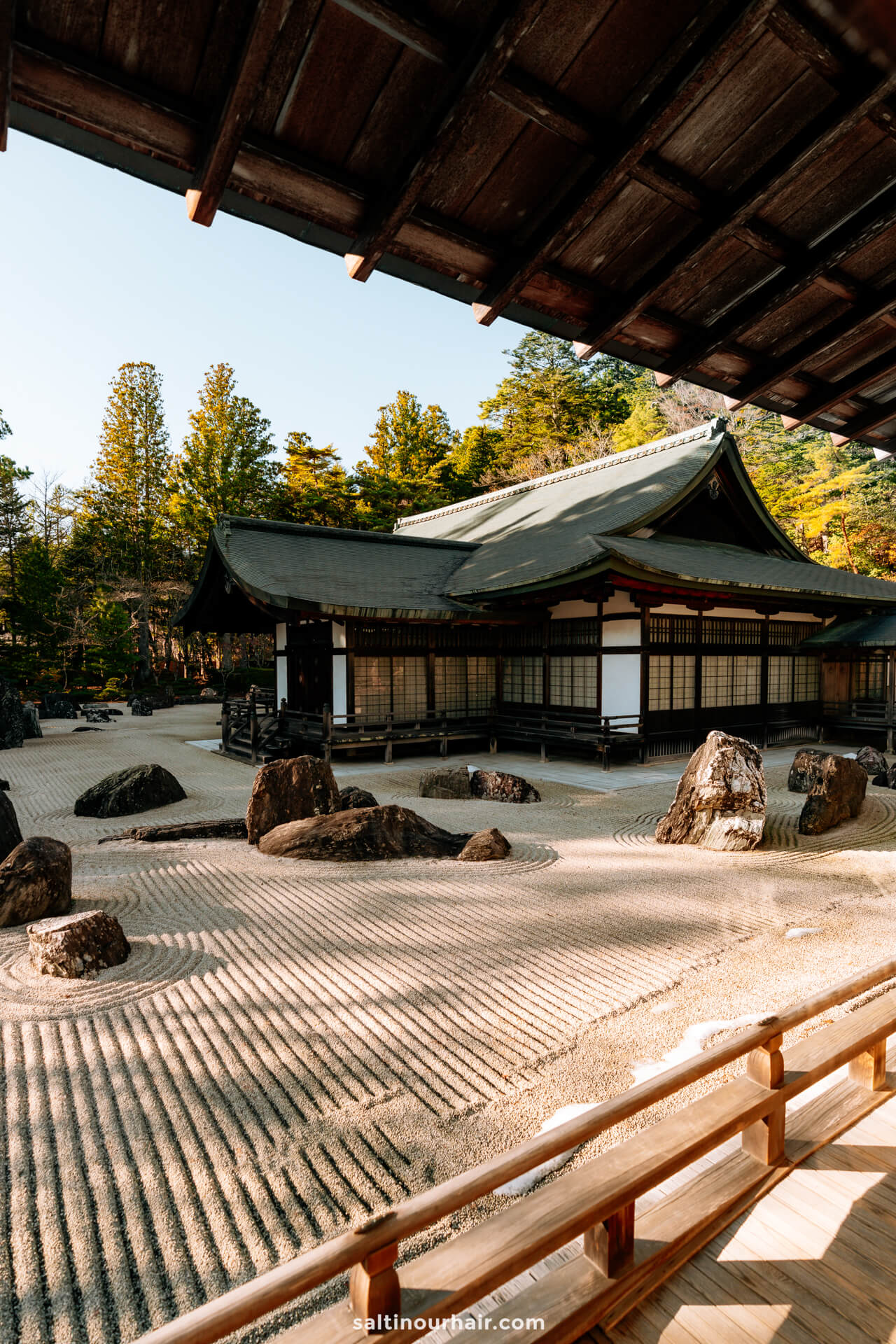
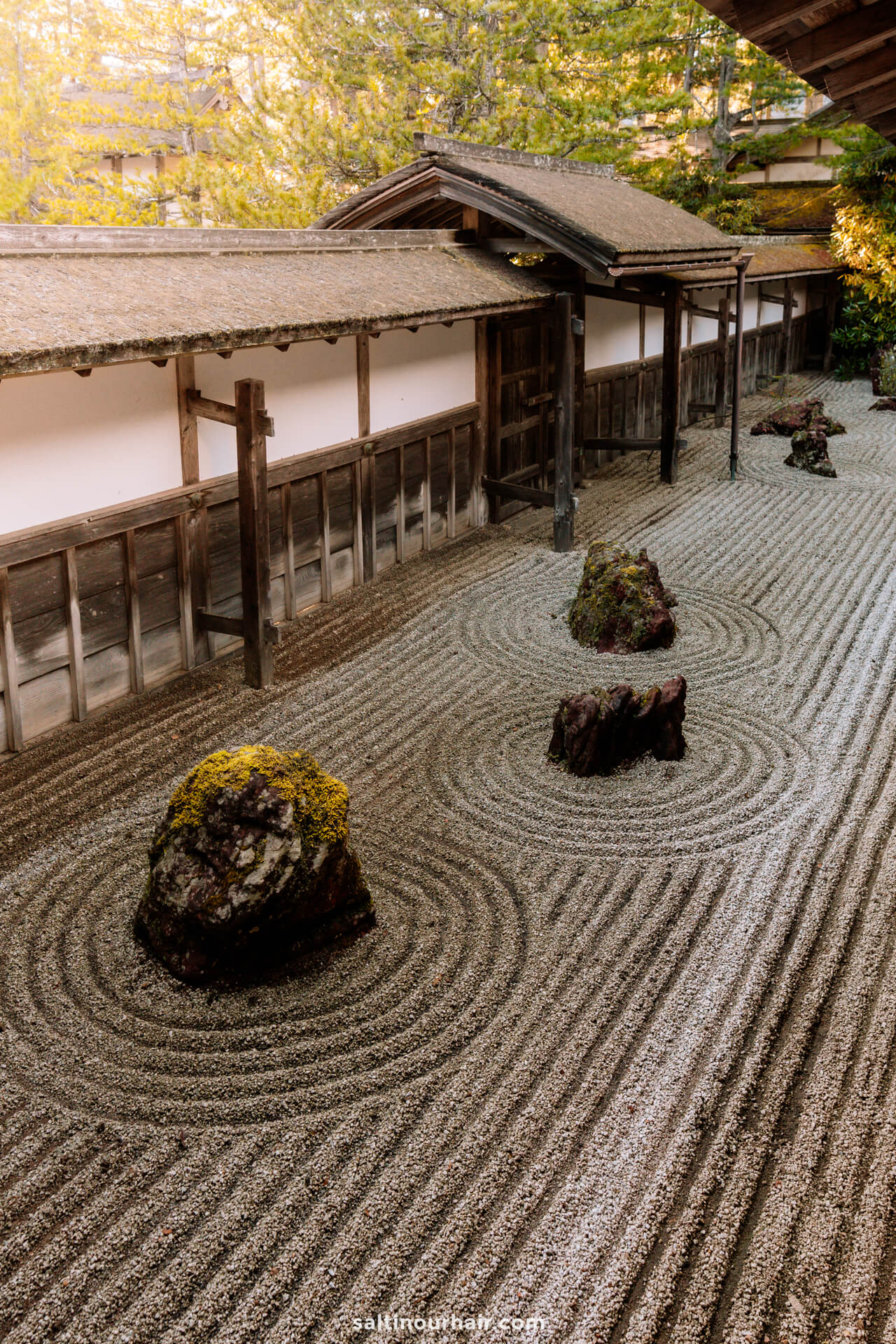
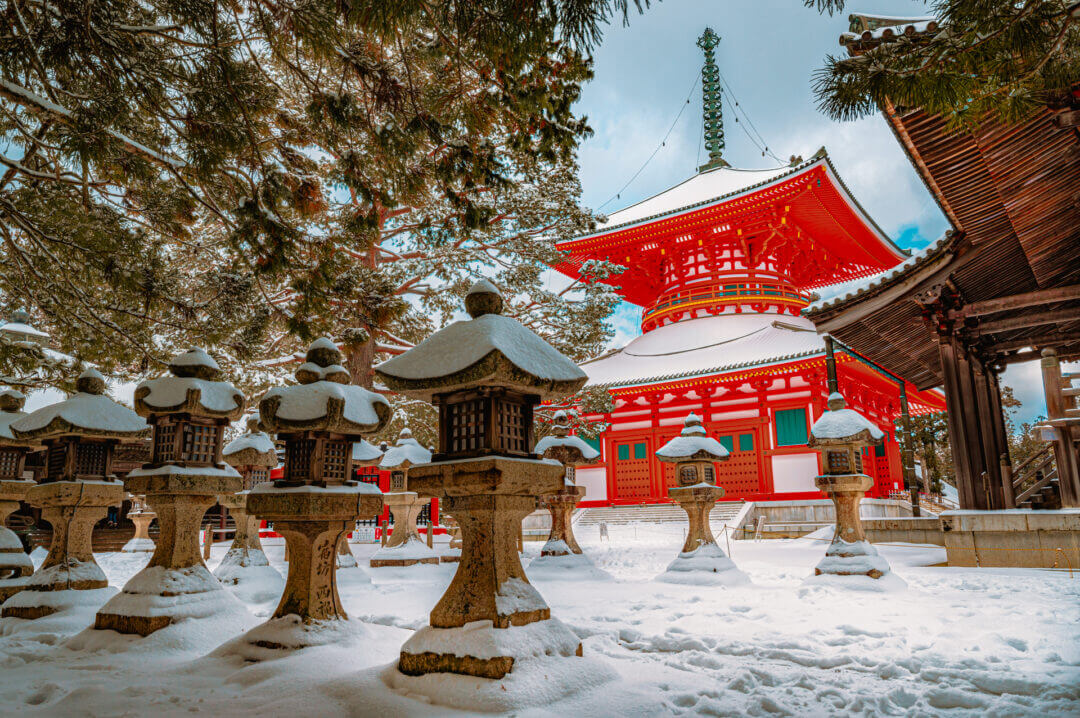
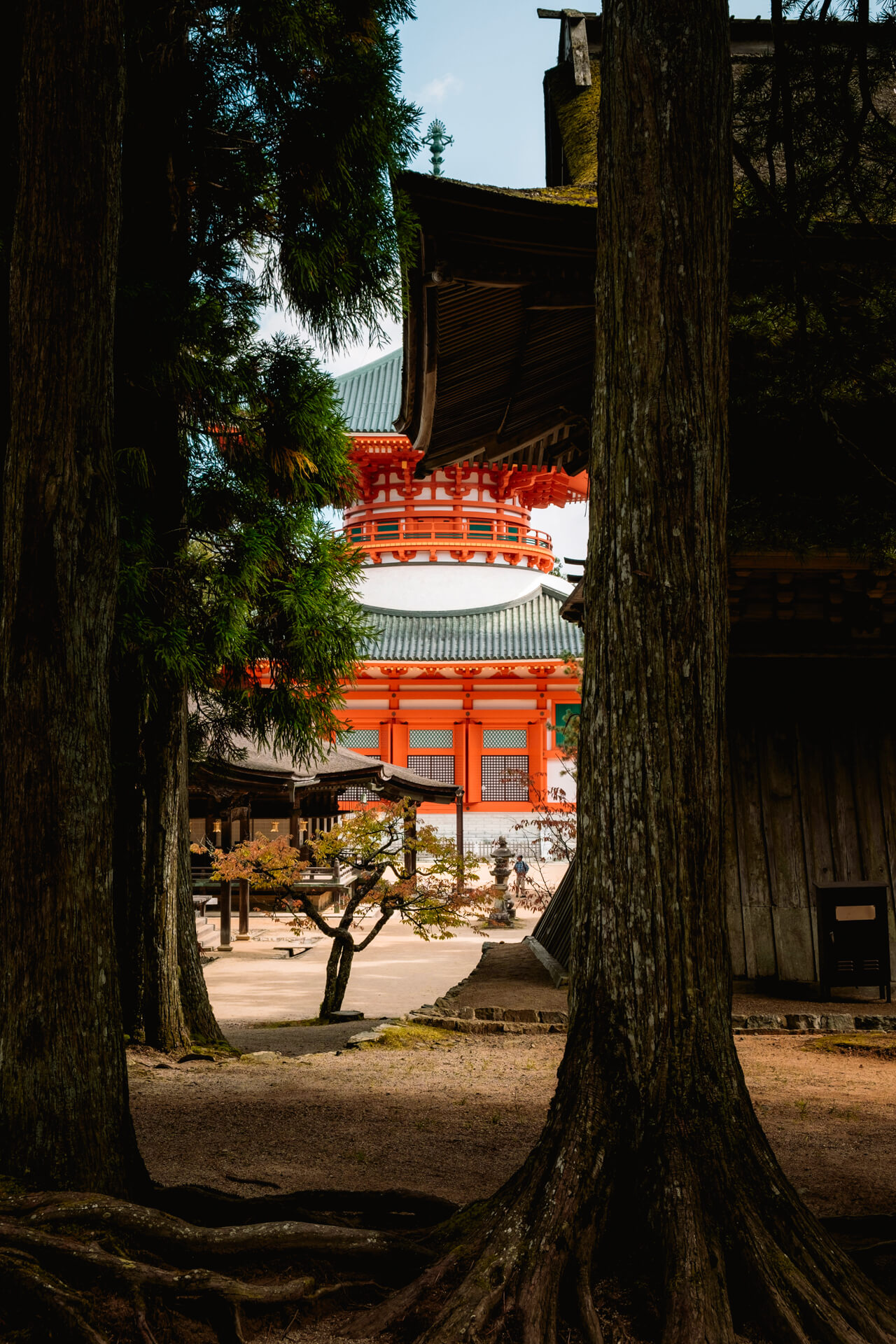
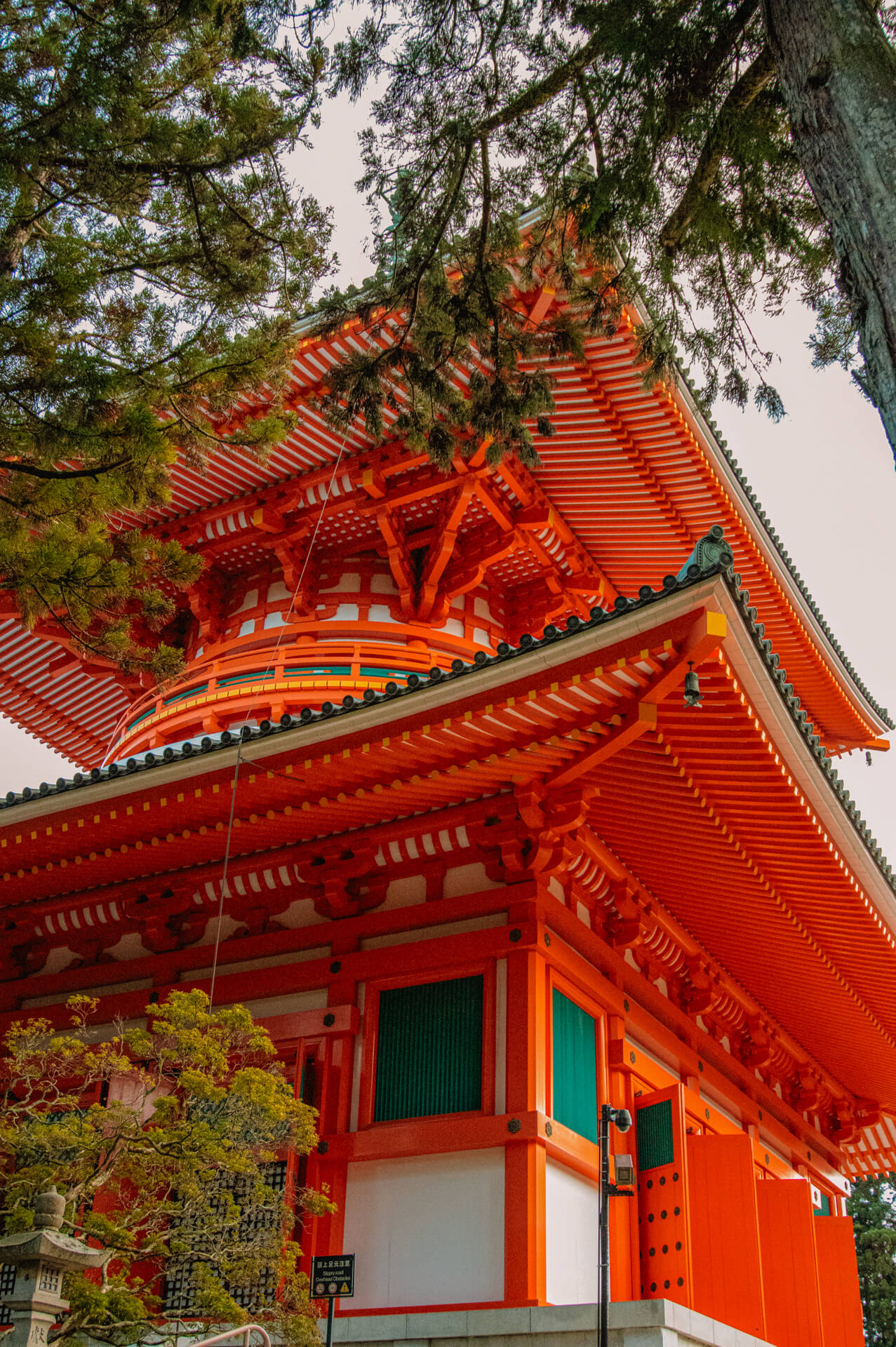
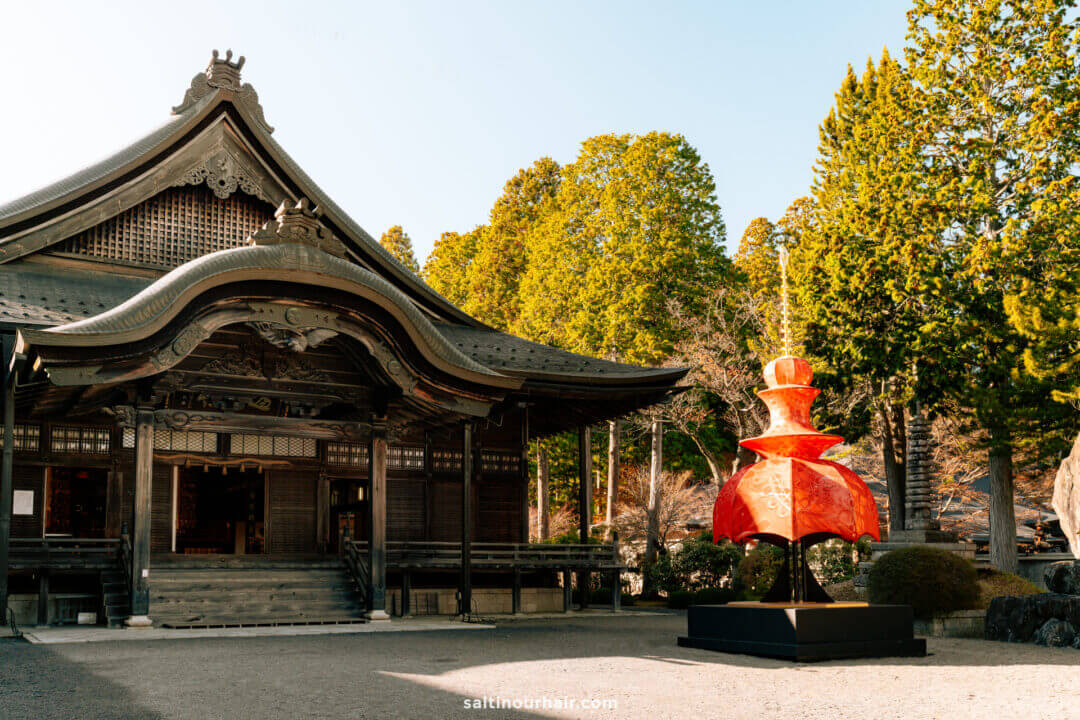
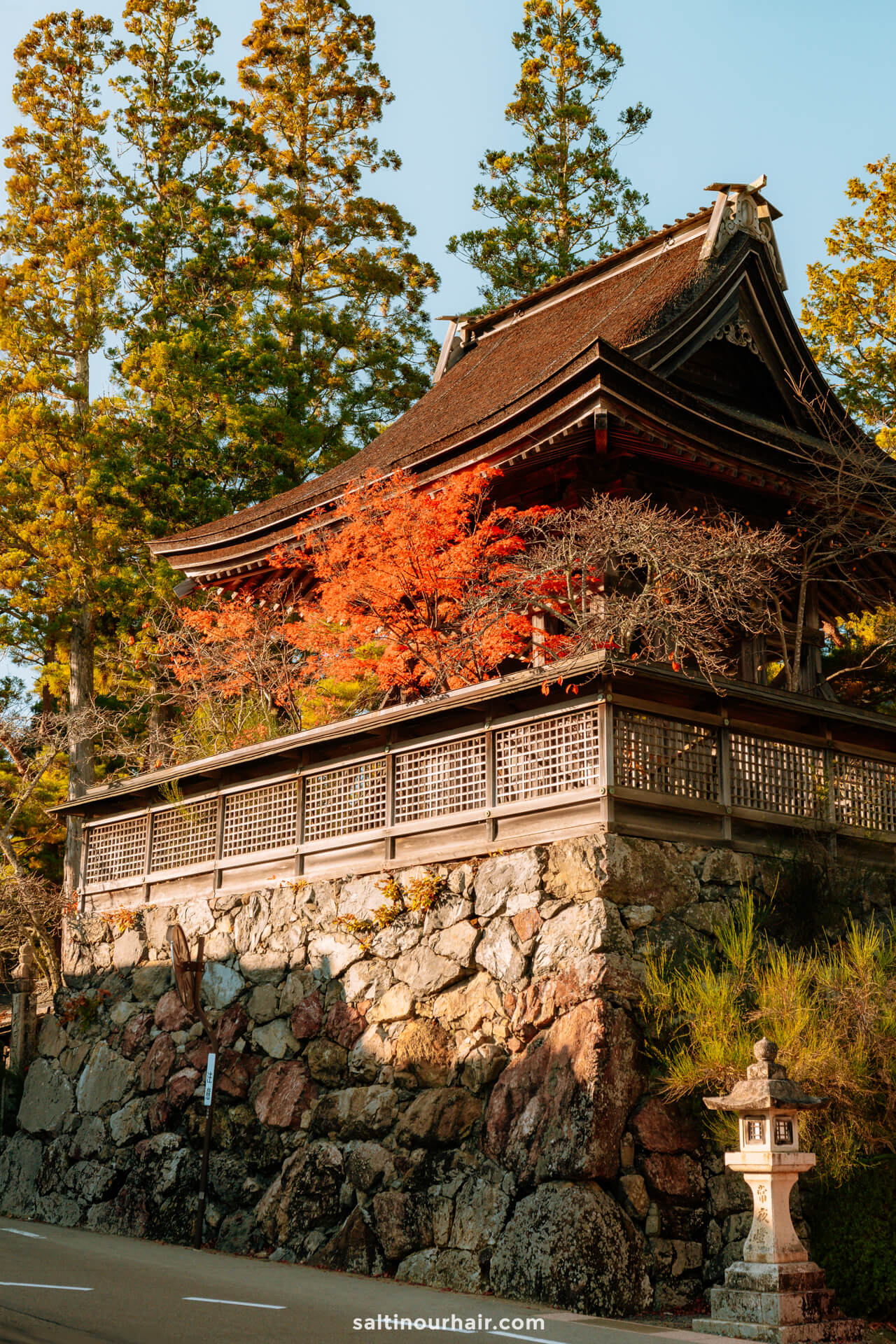
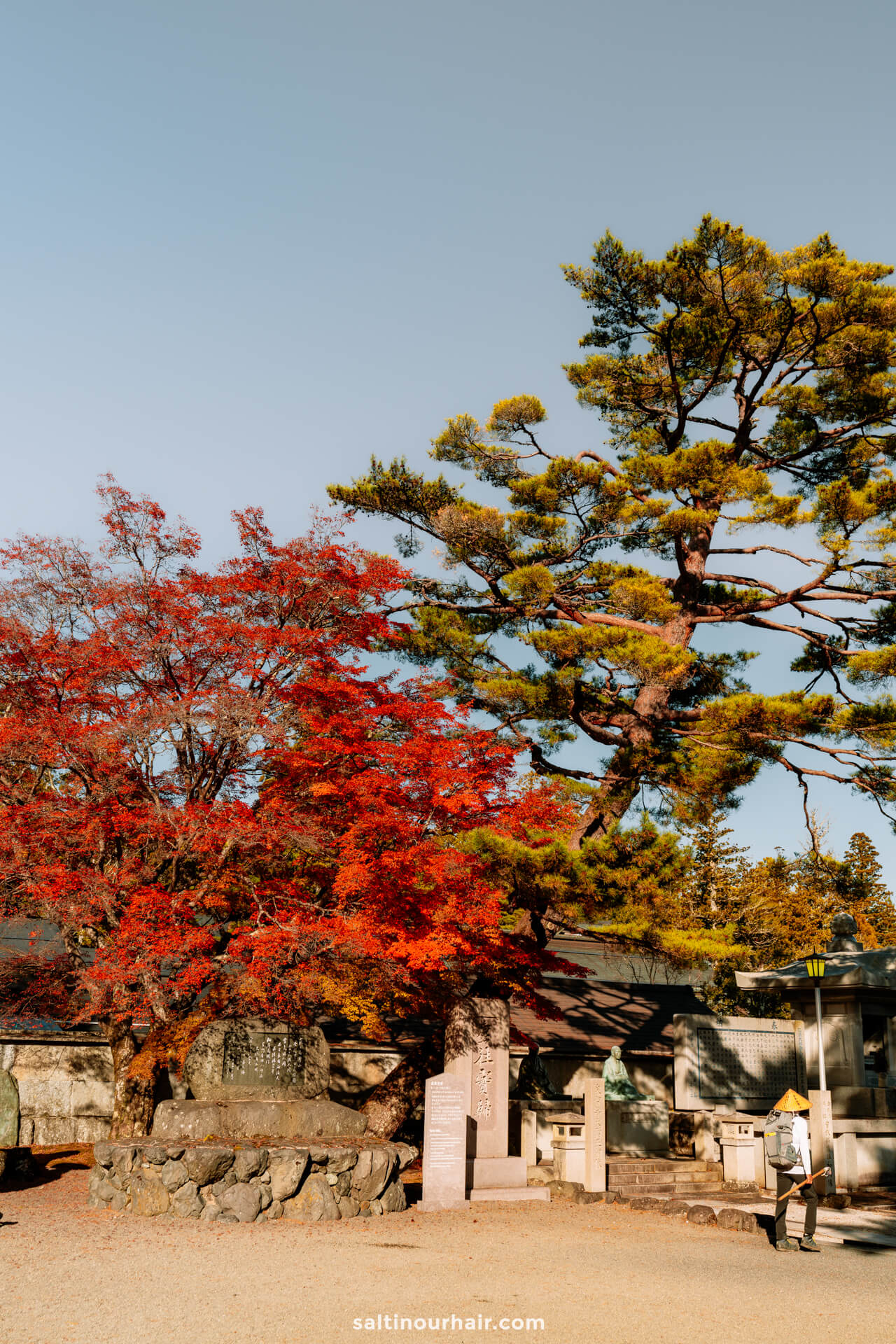
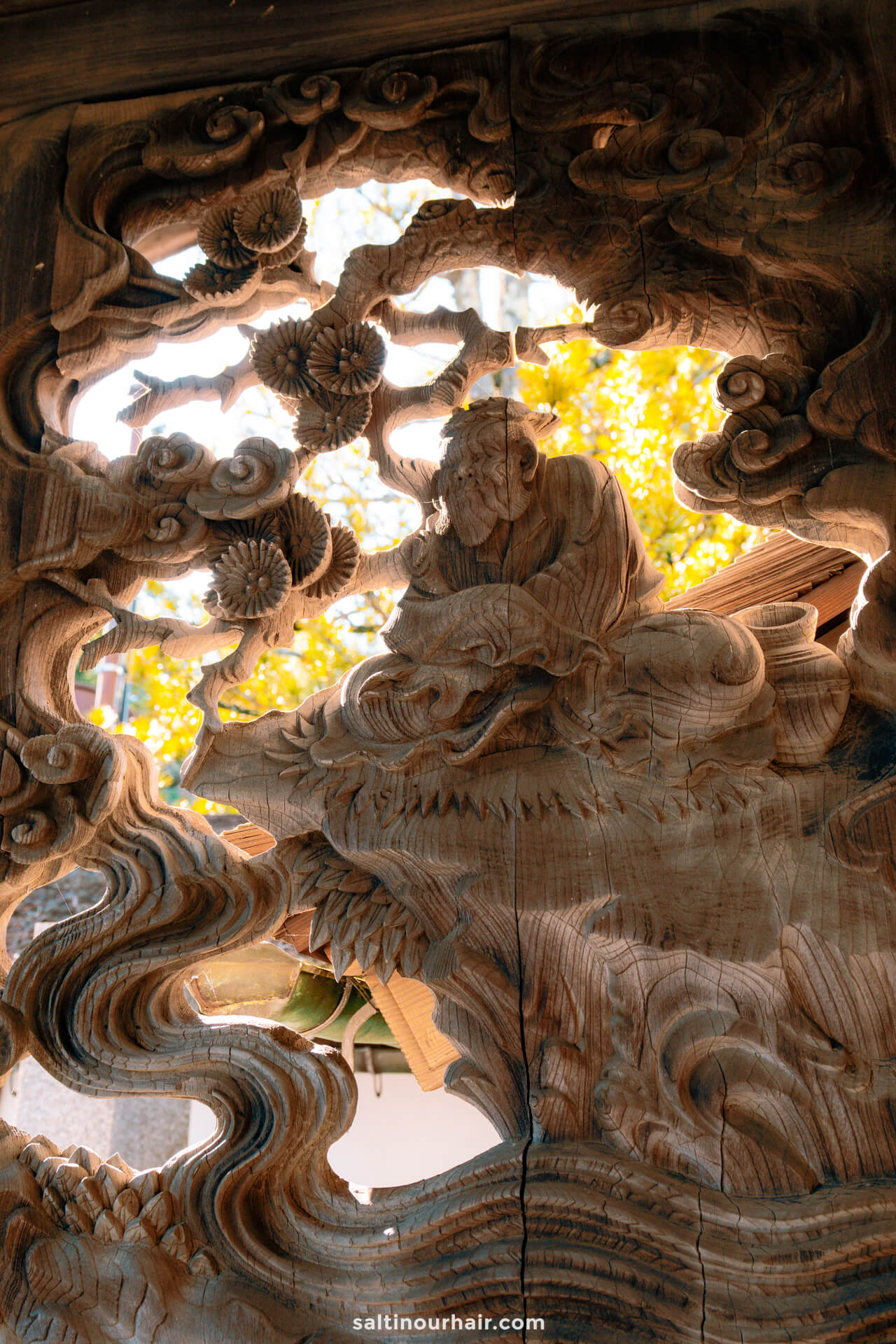
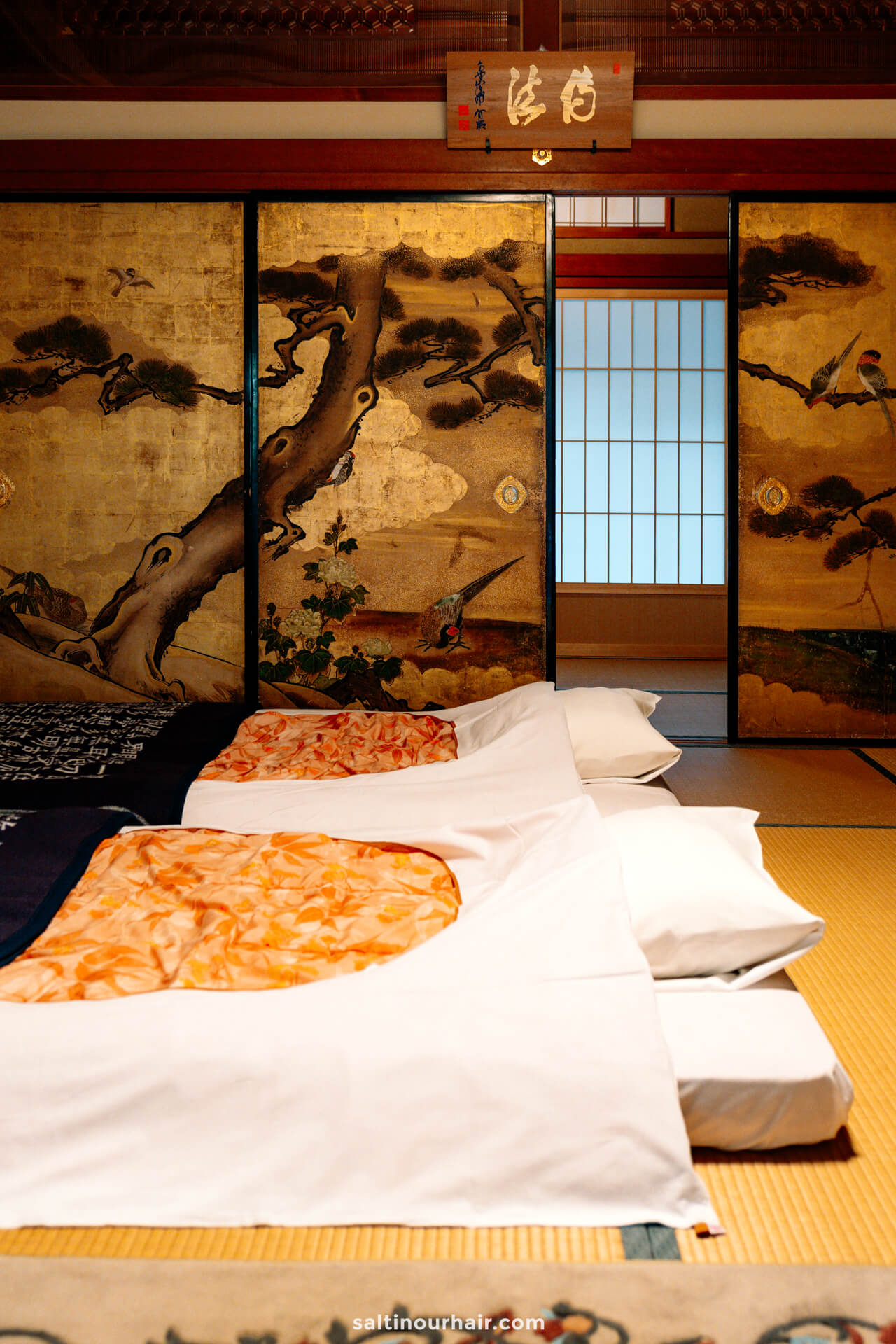
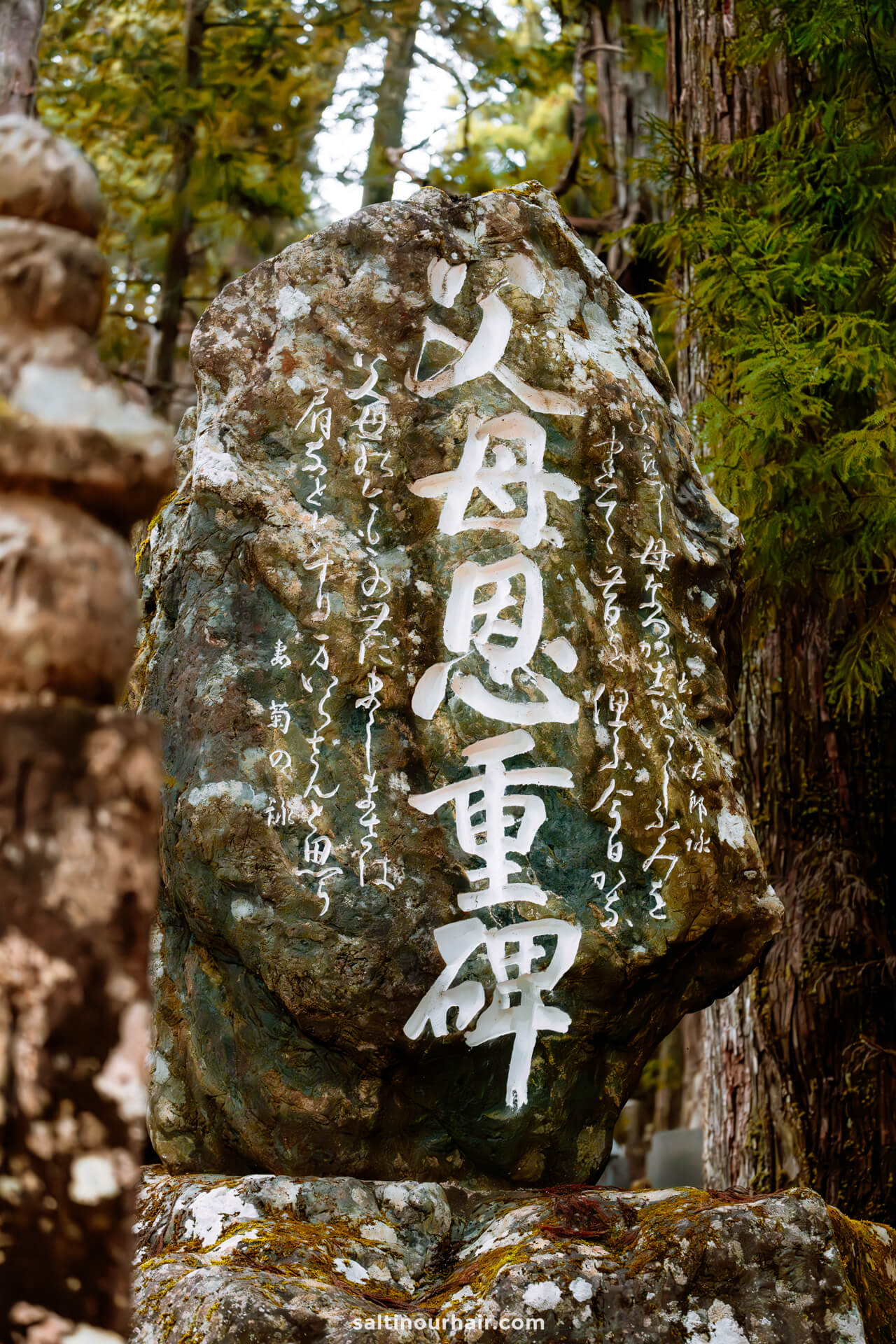
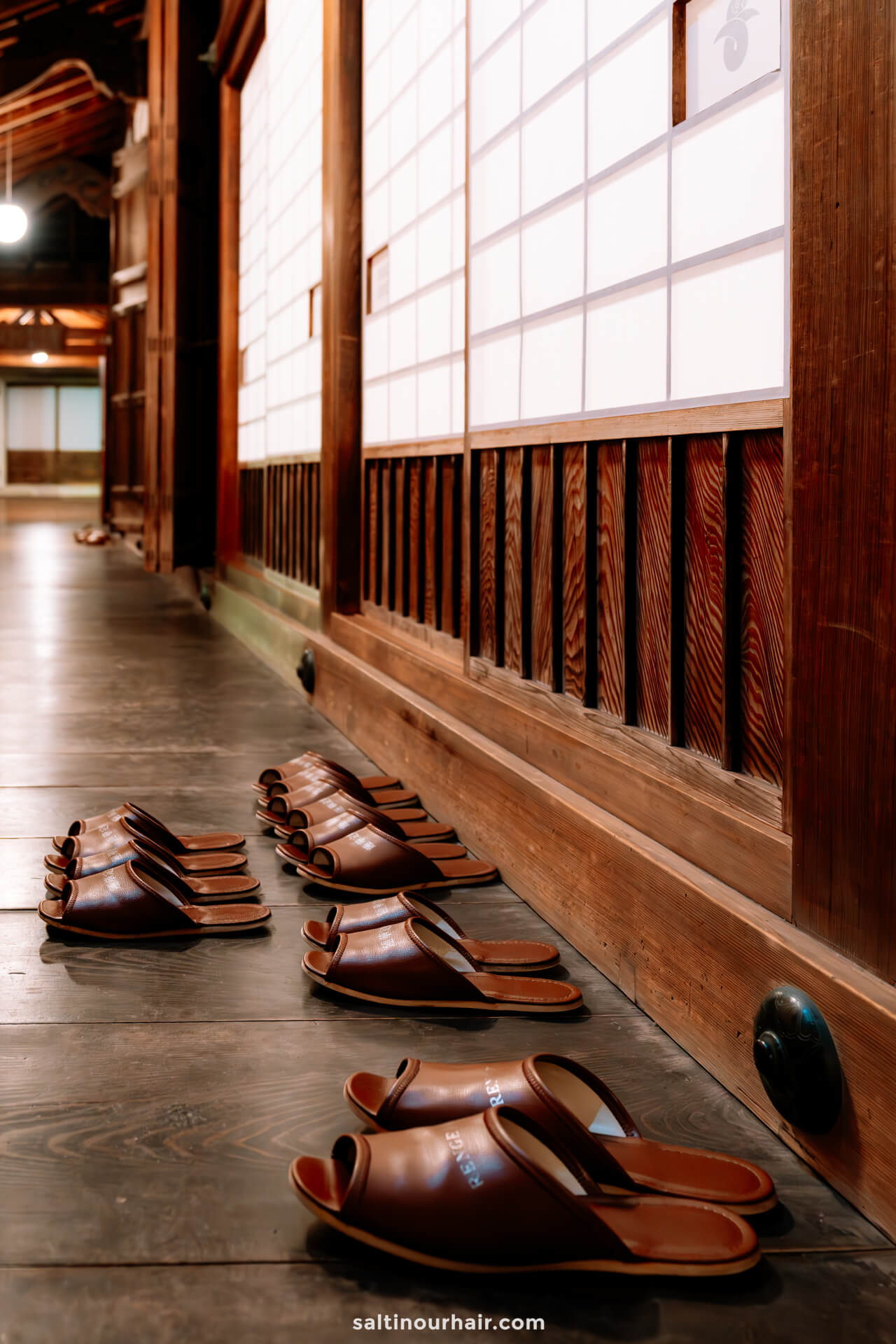
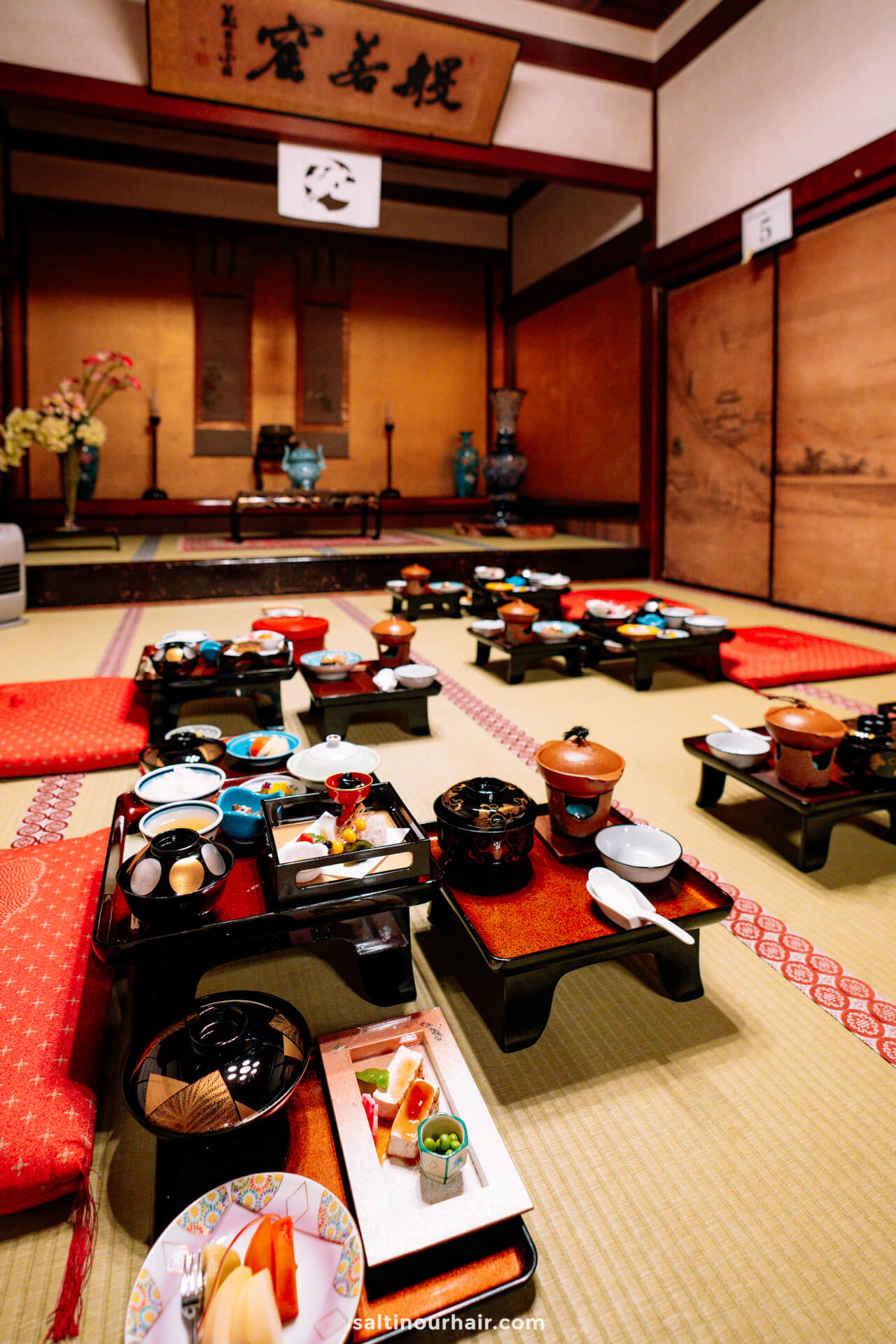
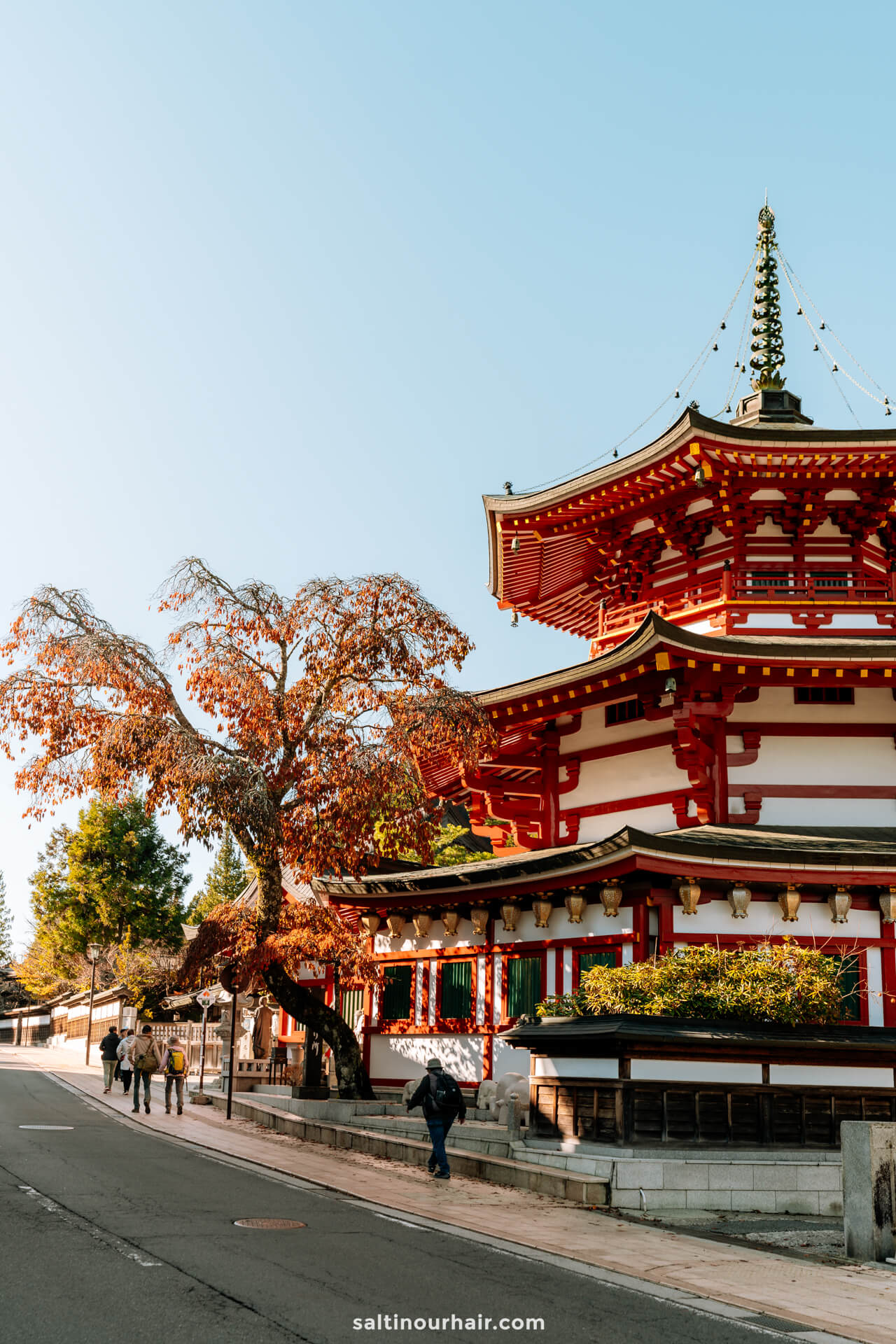
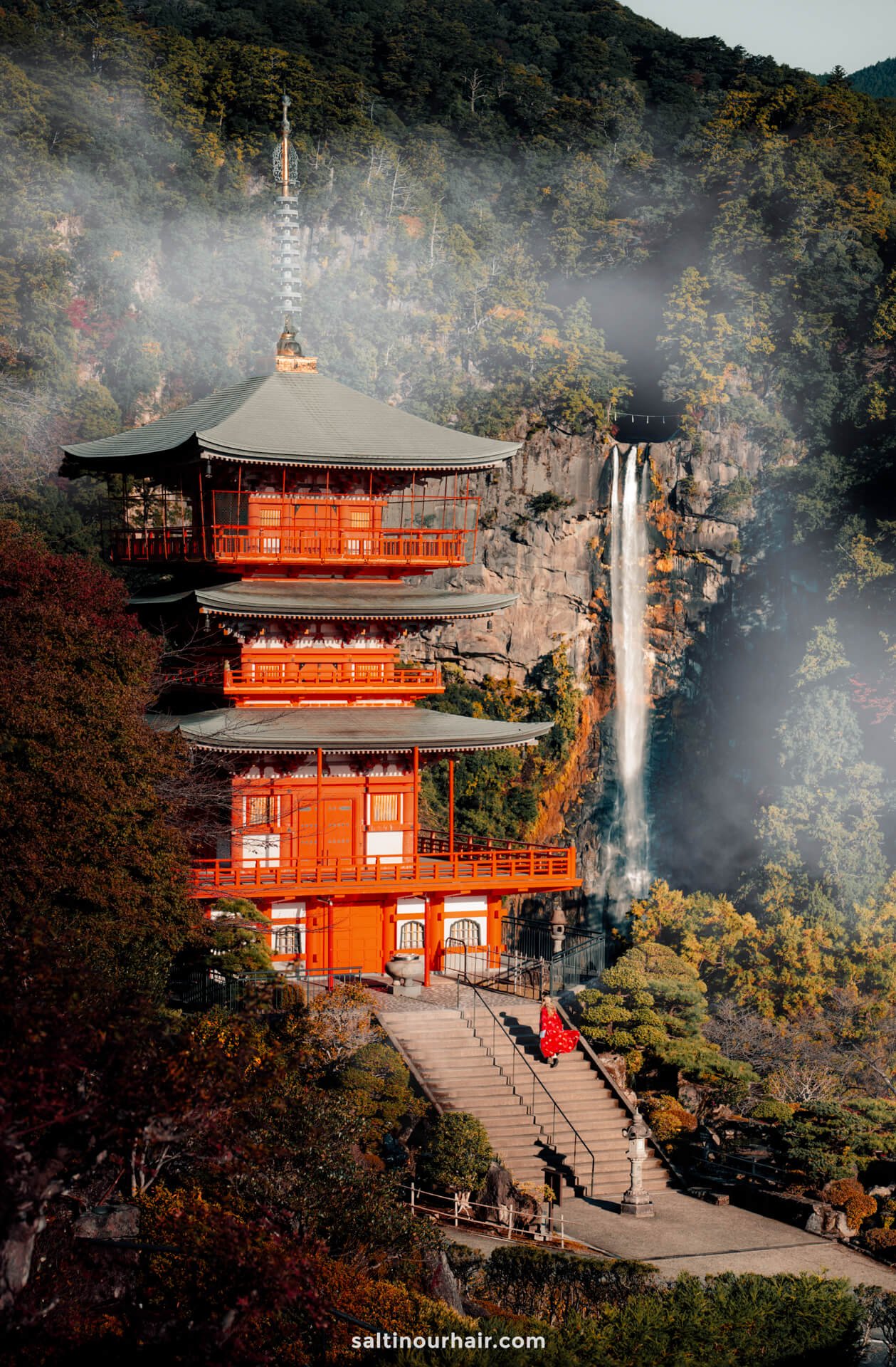
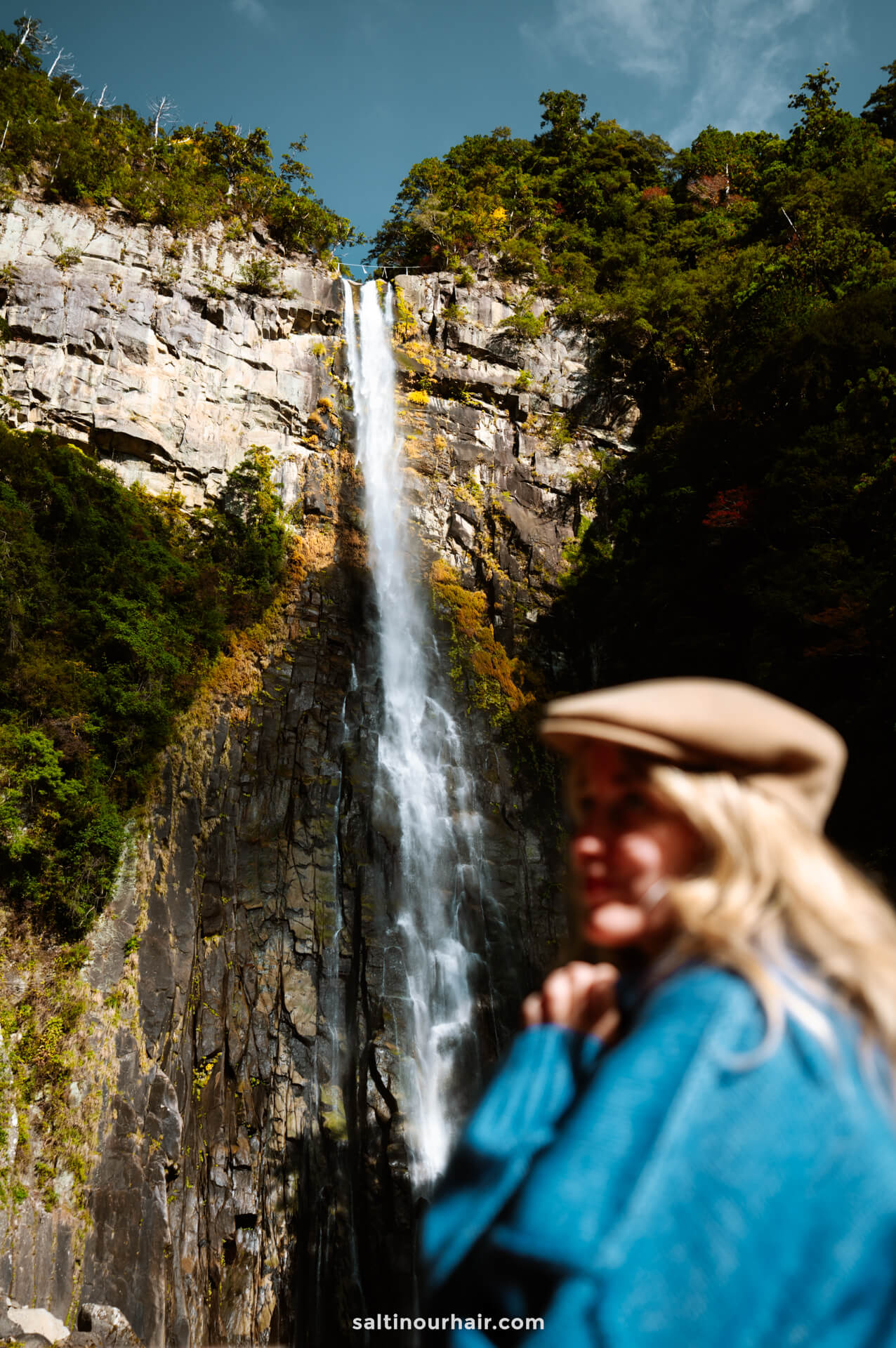
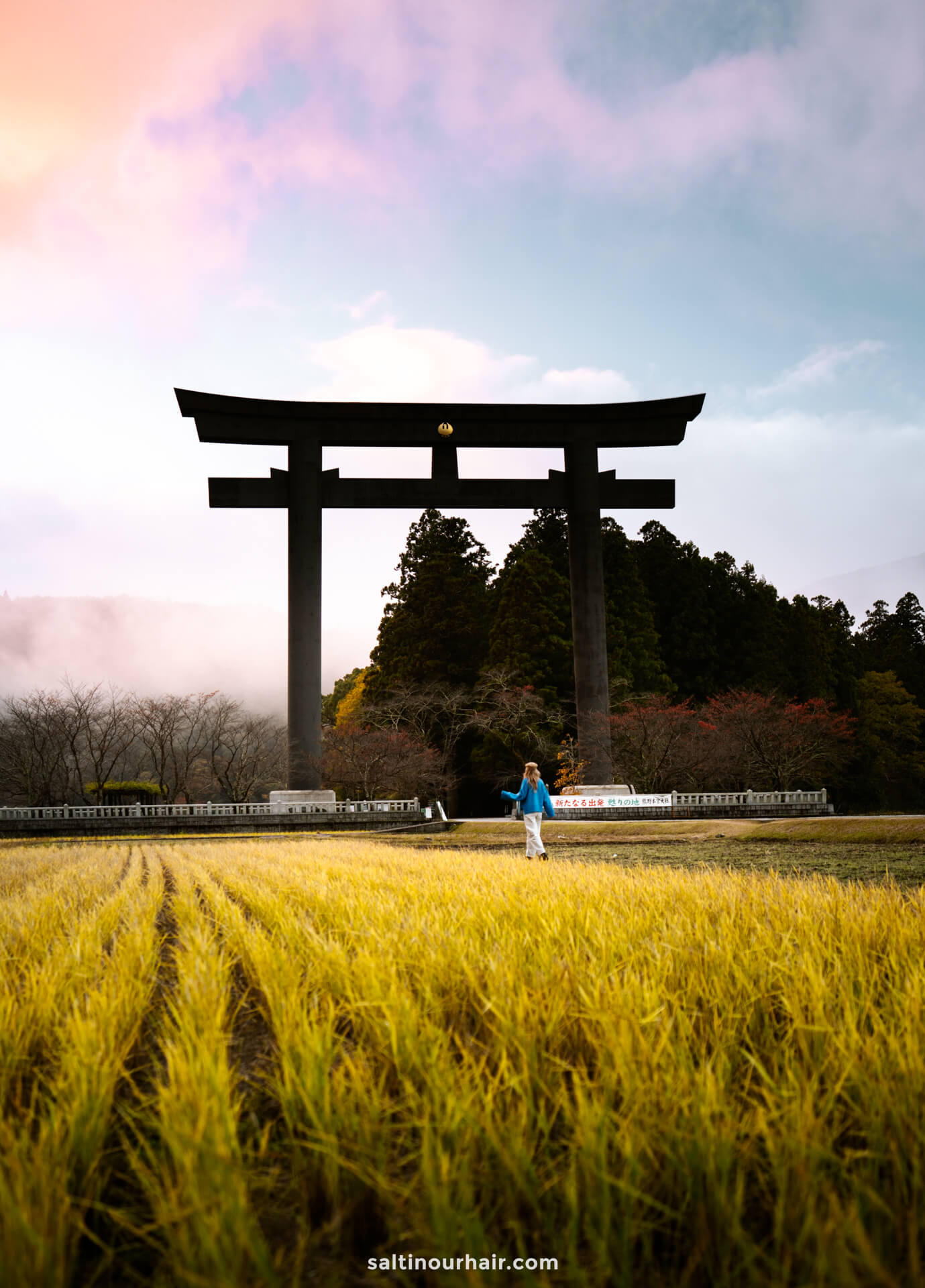
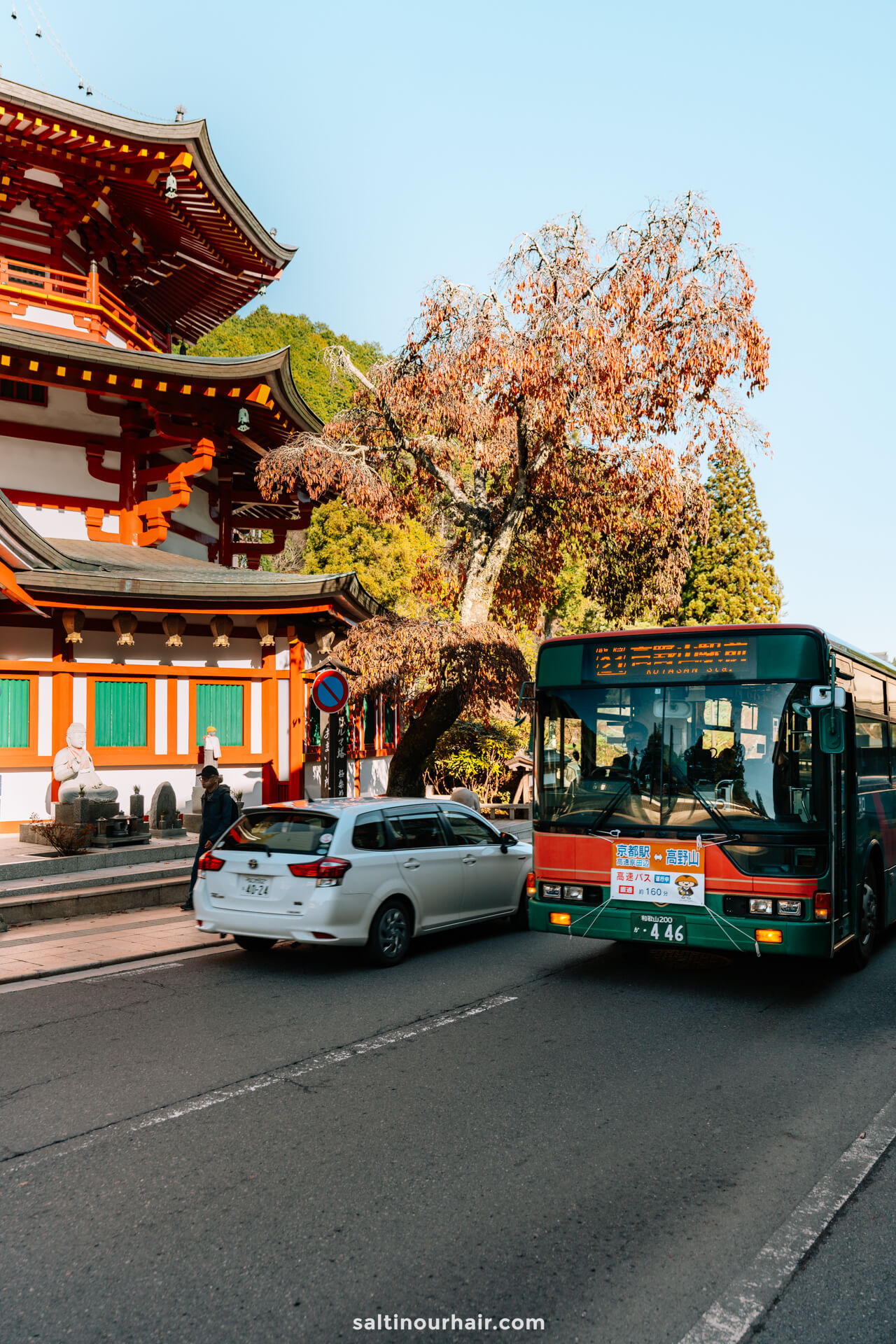
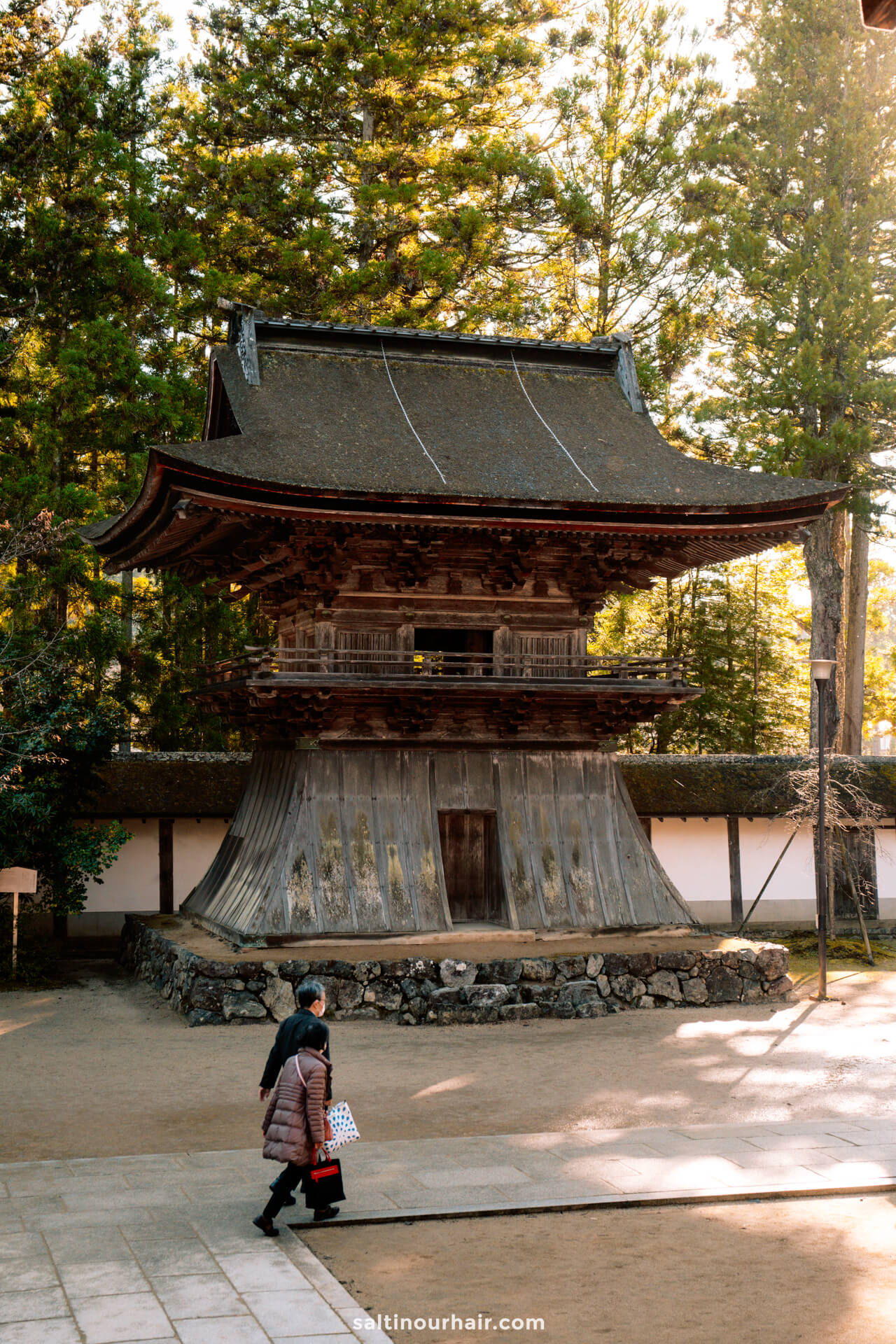
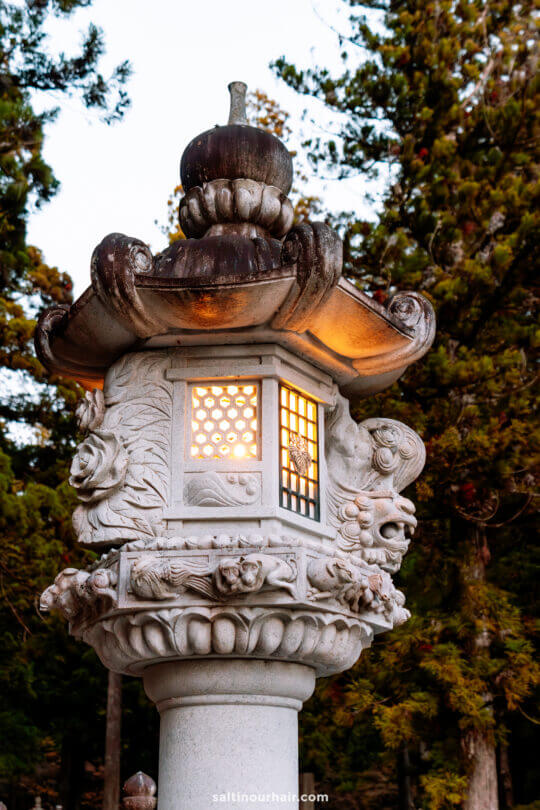
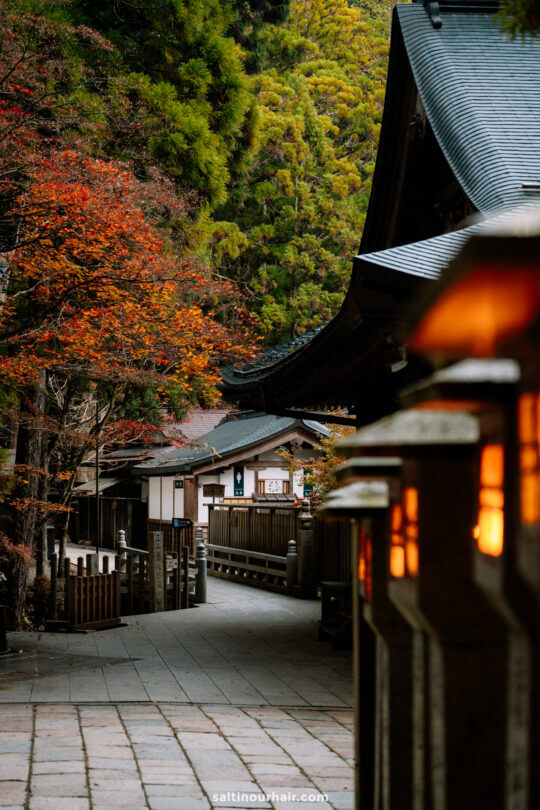
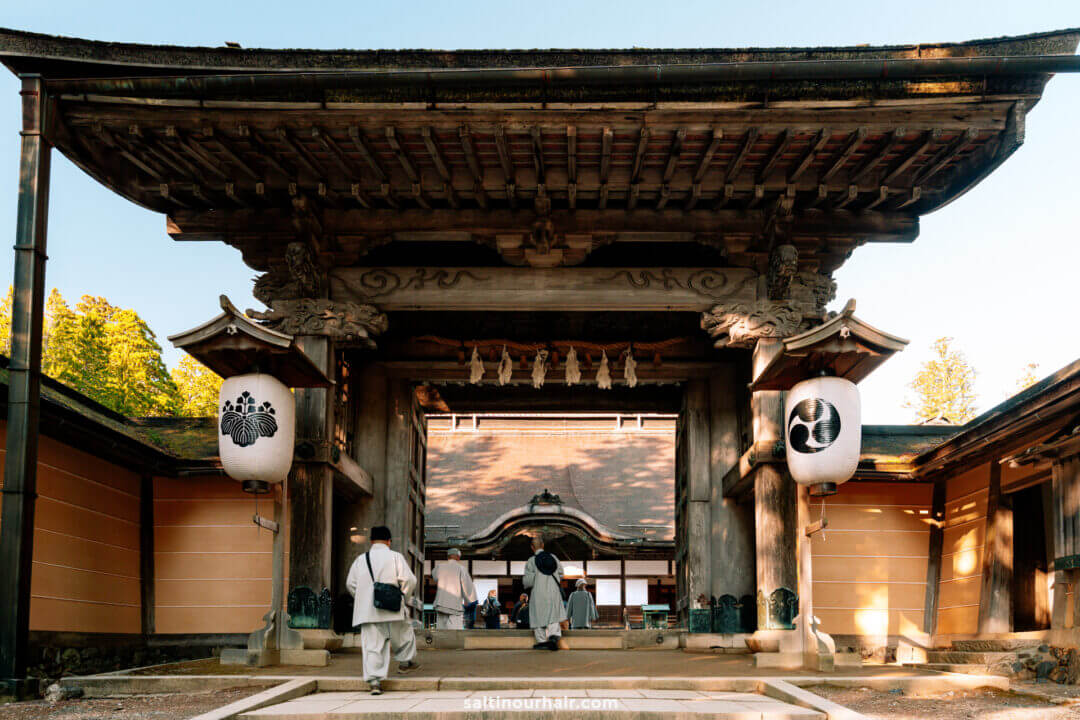
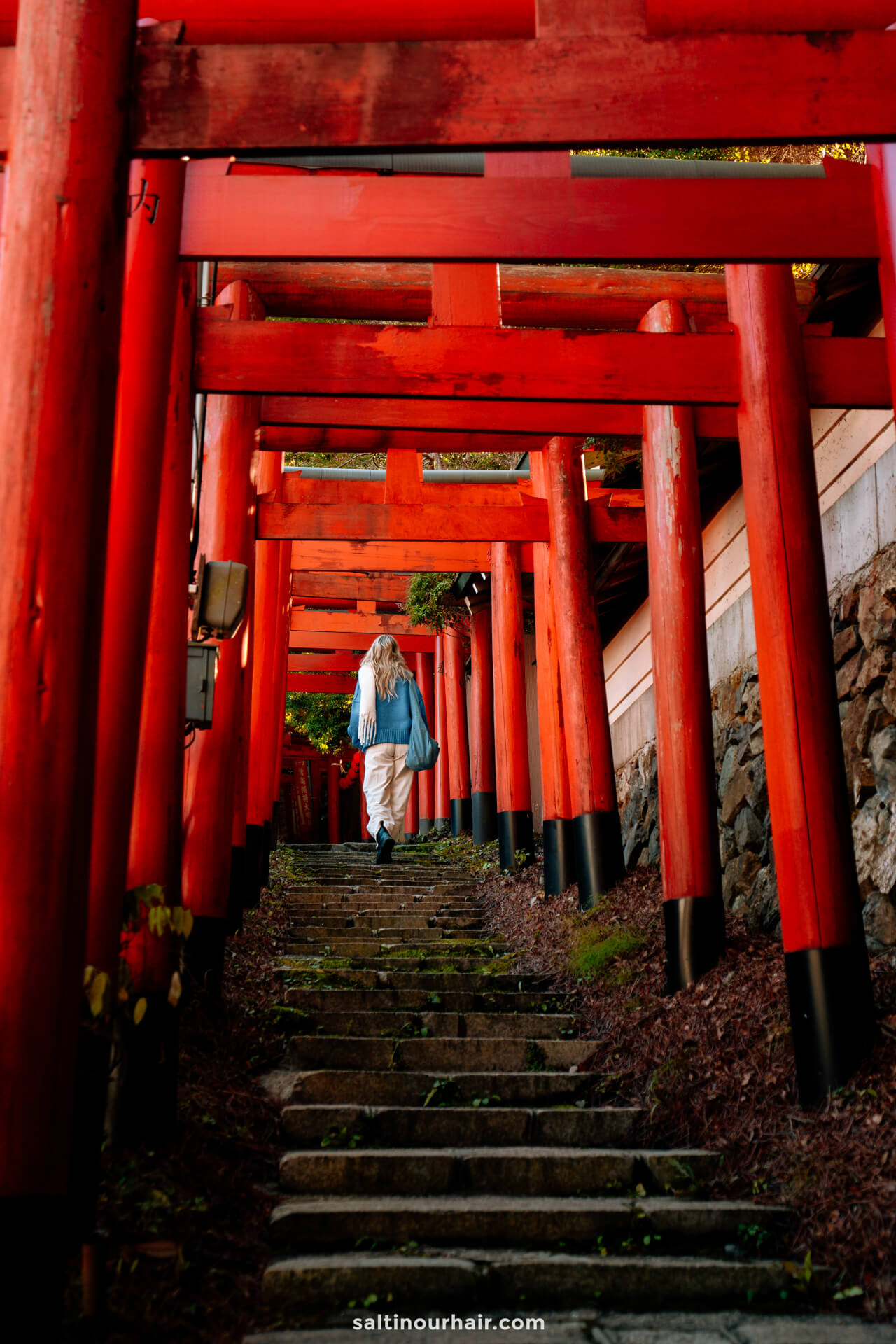
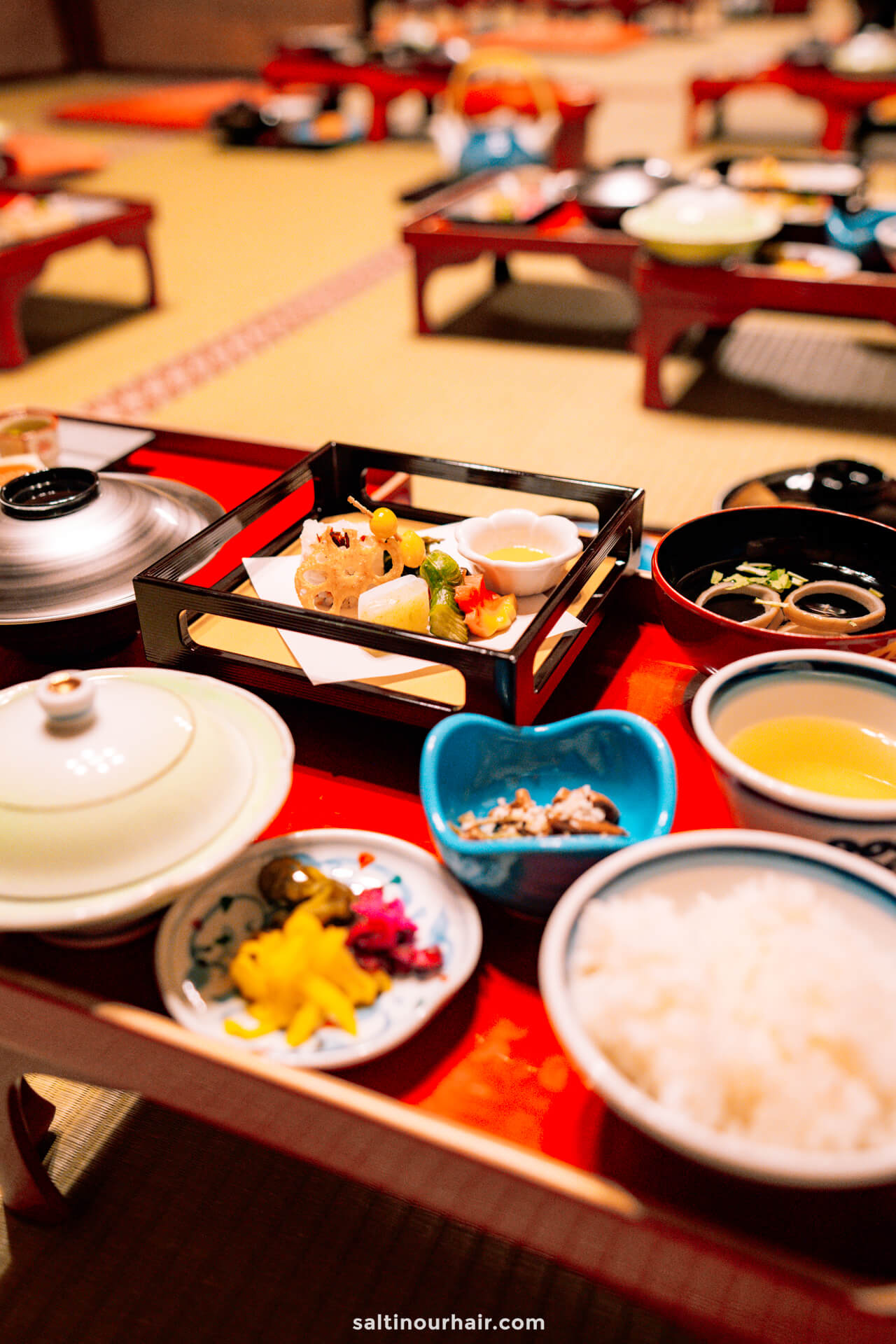
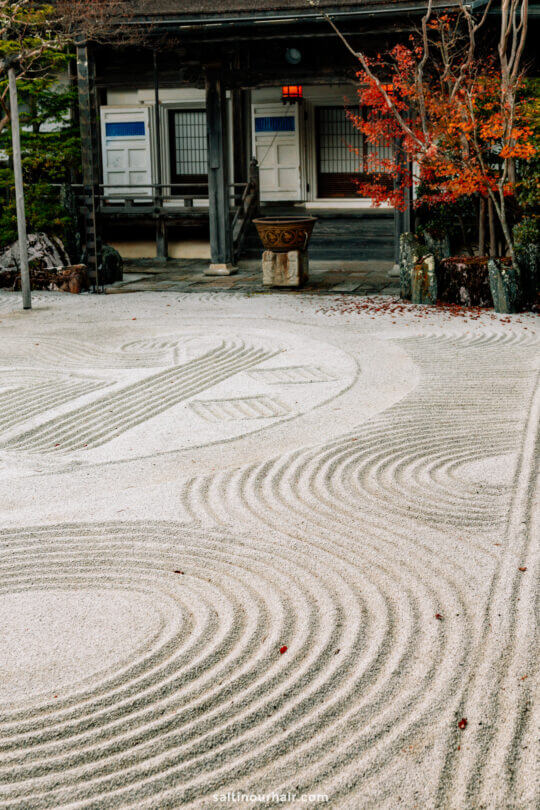
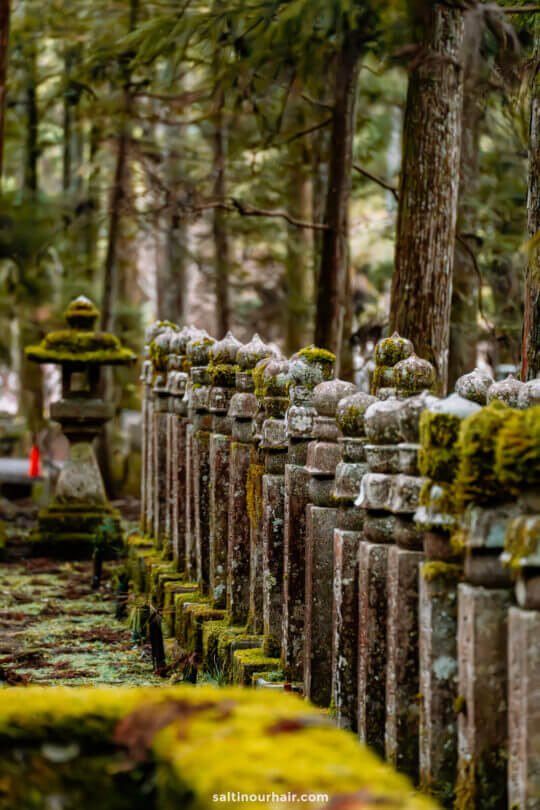
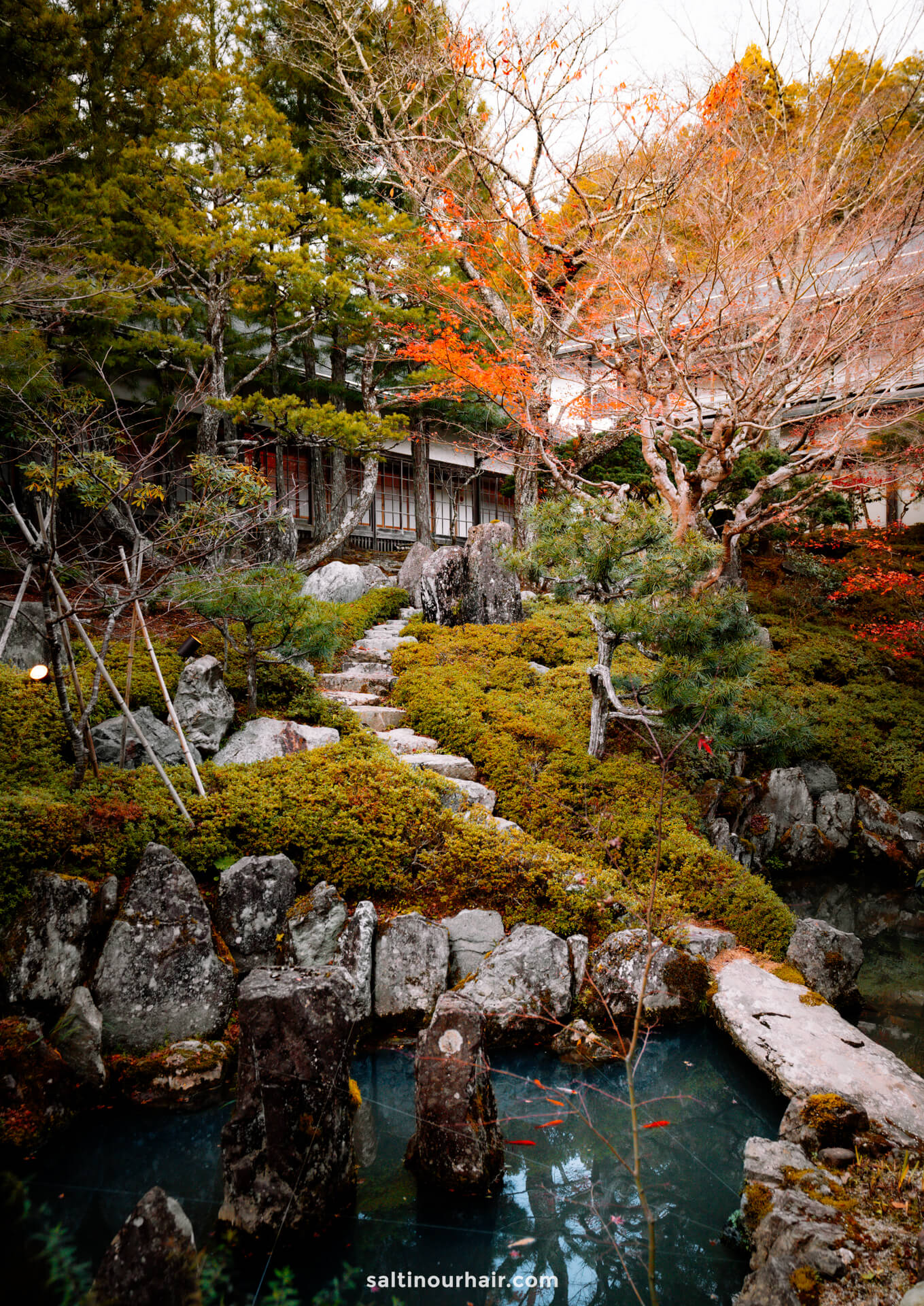
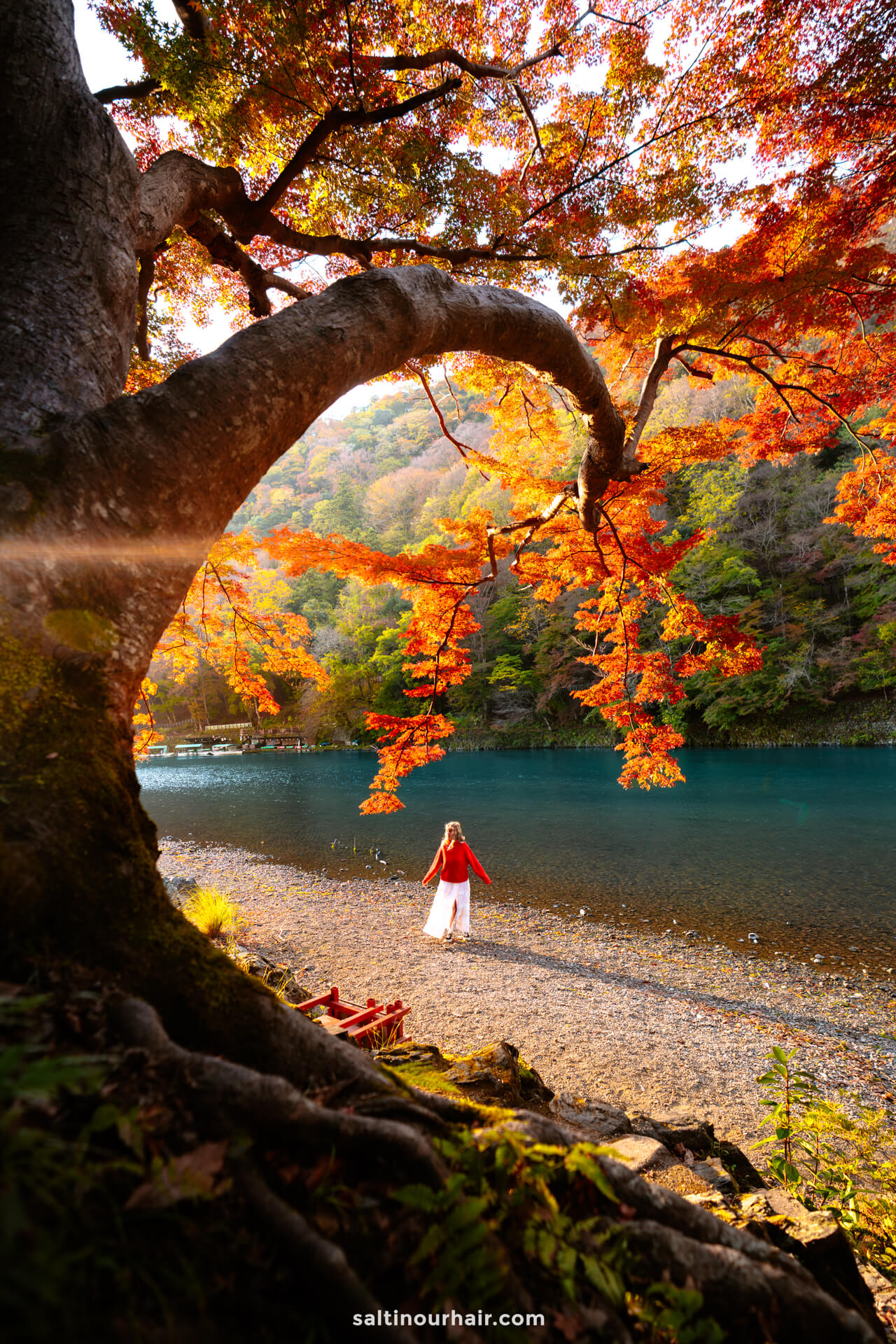


Ik mis iets dat je absoluut moet doen als je naar Koyasan gaat. De gigantische begraafplaats Oku-no-in bezoeken. Waar al honderden jaren indrukwekkende met mos begroeide graven liggen en waar het mausoleum is waar men wacht op de terugkeer van Kobo Daishi die hier een school/religie heeft gesticht. Zijn volgers geloven dat hij niet dood is maar mediteert in zijn mausoleum. En brengen daarom offers. Fotograferen is er streng verboden. Zeer indrukwekkend.
Hi Annet, ik denk dat je hier overheen gelezen hebt. We praten in onze reisgids zeker over de “Okunoin Cemetery”. De lantaarn hal (waar binnen geen foto’s gemaakt mochten worden) was inderdaad zeer indrukwekkend.